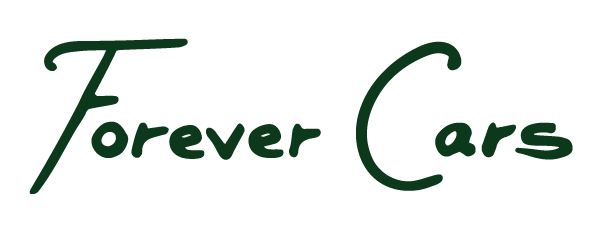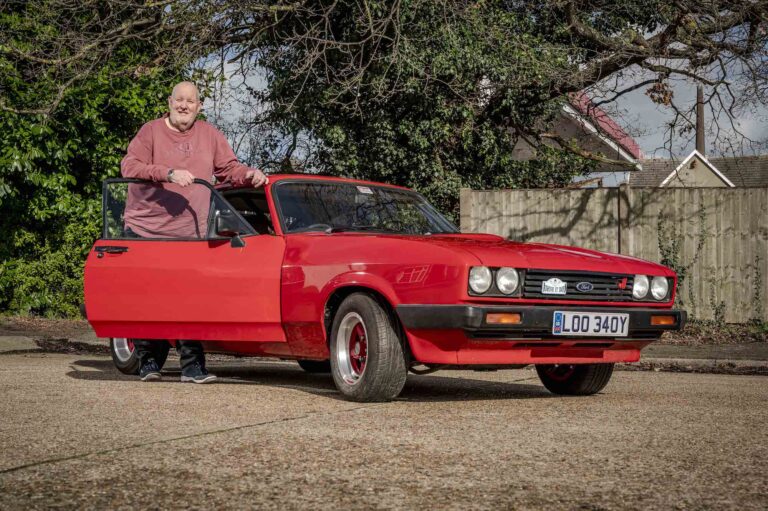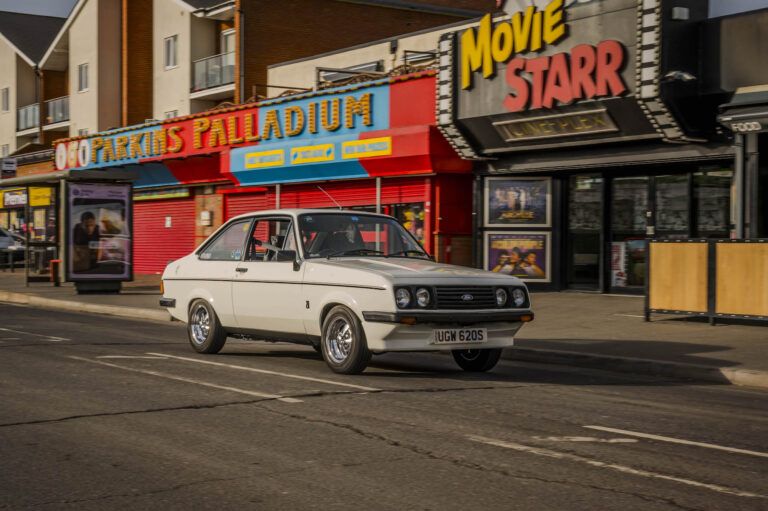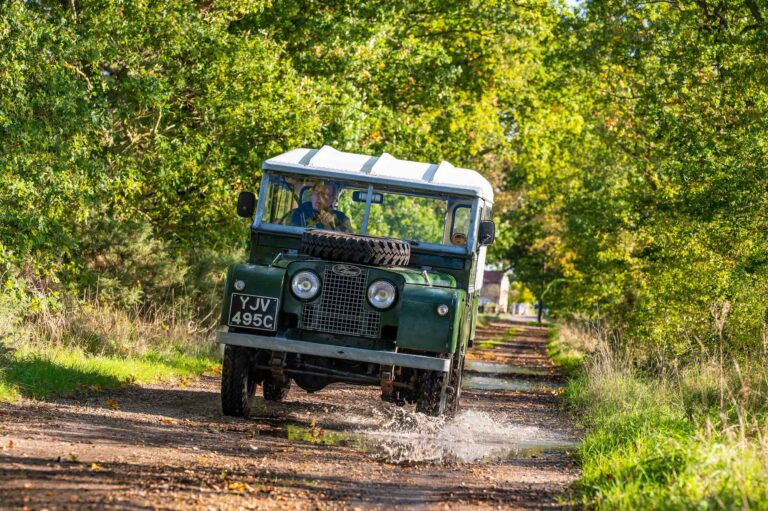If you’re serious about E-Types, you’re probably aware of Henry Pearman, the man whose company has re-engineered Jaguar’s finest with a series of stunning ‘super-restorations’.
Eagle E-Types are revered across the world for bringing the sports car rooted in the early 1960s roaring into the 21st century.
But back in 1989, when he lined up for his second Pirelli Classic Marathon in a 1968 Series 1.5 roadster, he was a largely unknown 25-year-old mixing it with some of the most famous names in motor racing.
Alongside navigator Gordon Cruickshank, then and now deputy editor of MotorSport magazine, Henry rubbed shoulders at the start on Tower Bridge with the likes of Stirling Moss, Paddy Hopkirk, Timo Mäkinen, Roger Clark and Ove Andersson.
About 1,900 miles, 77 time controls and seven days later, the pair stormed up the Tre Cime climb in the Italian Alps in the overall lead, all those famous names trailing in their wake.

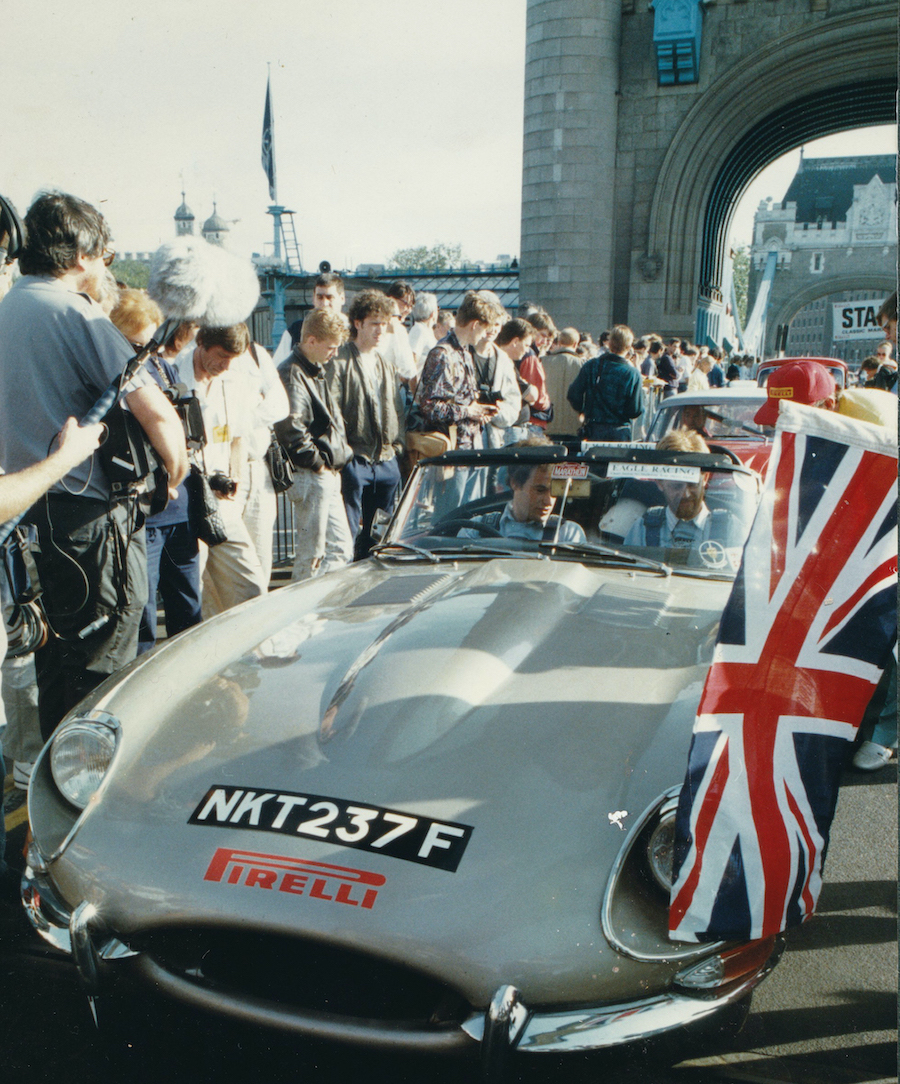
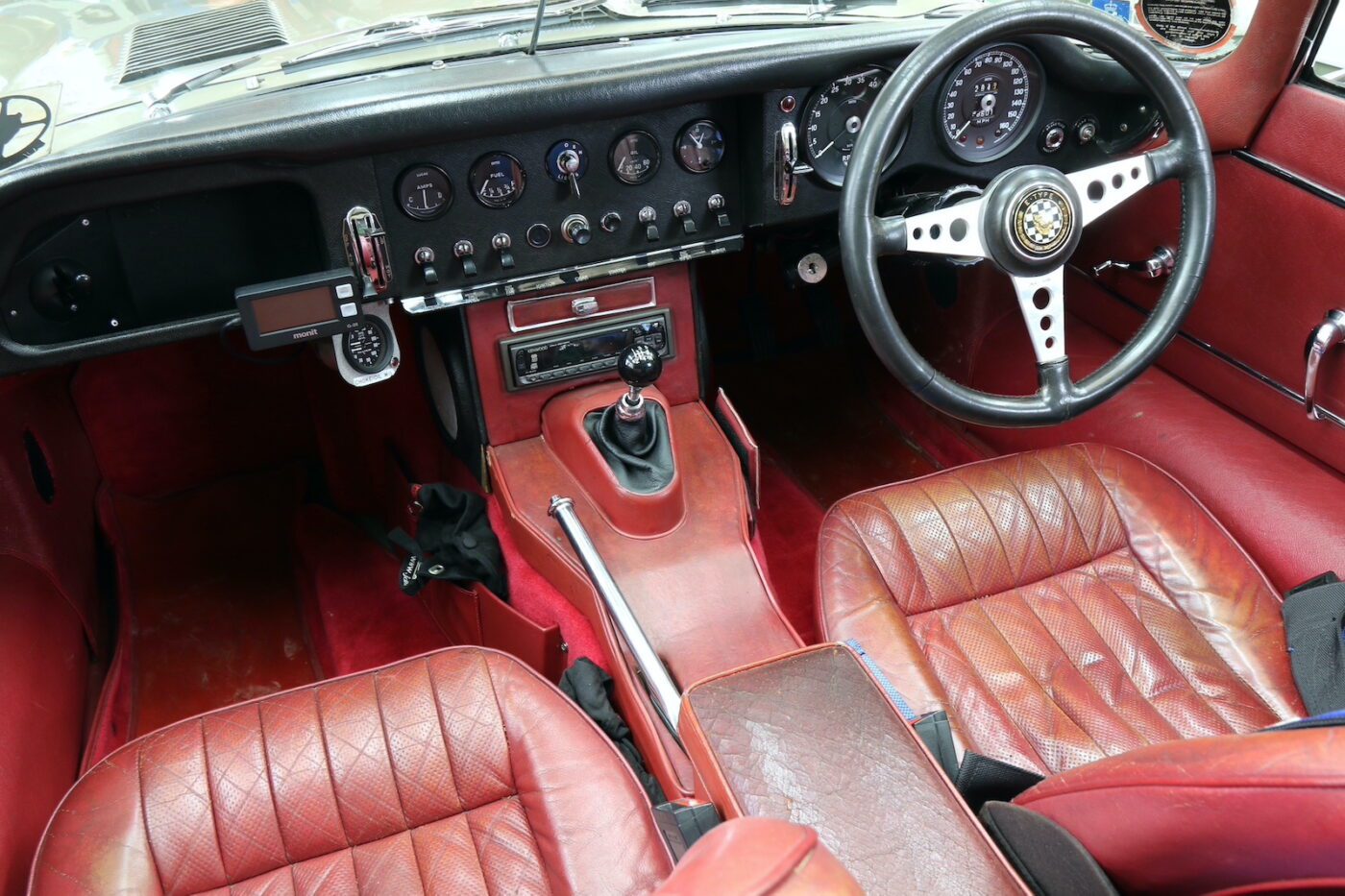
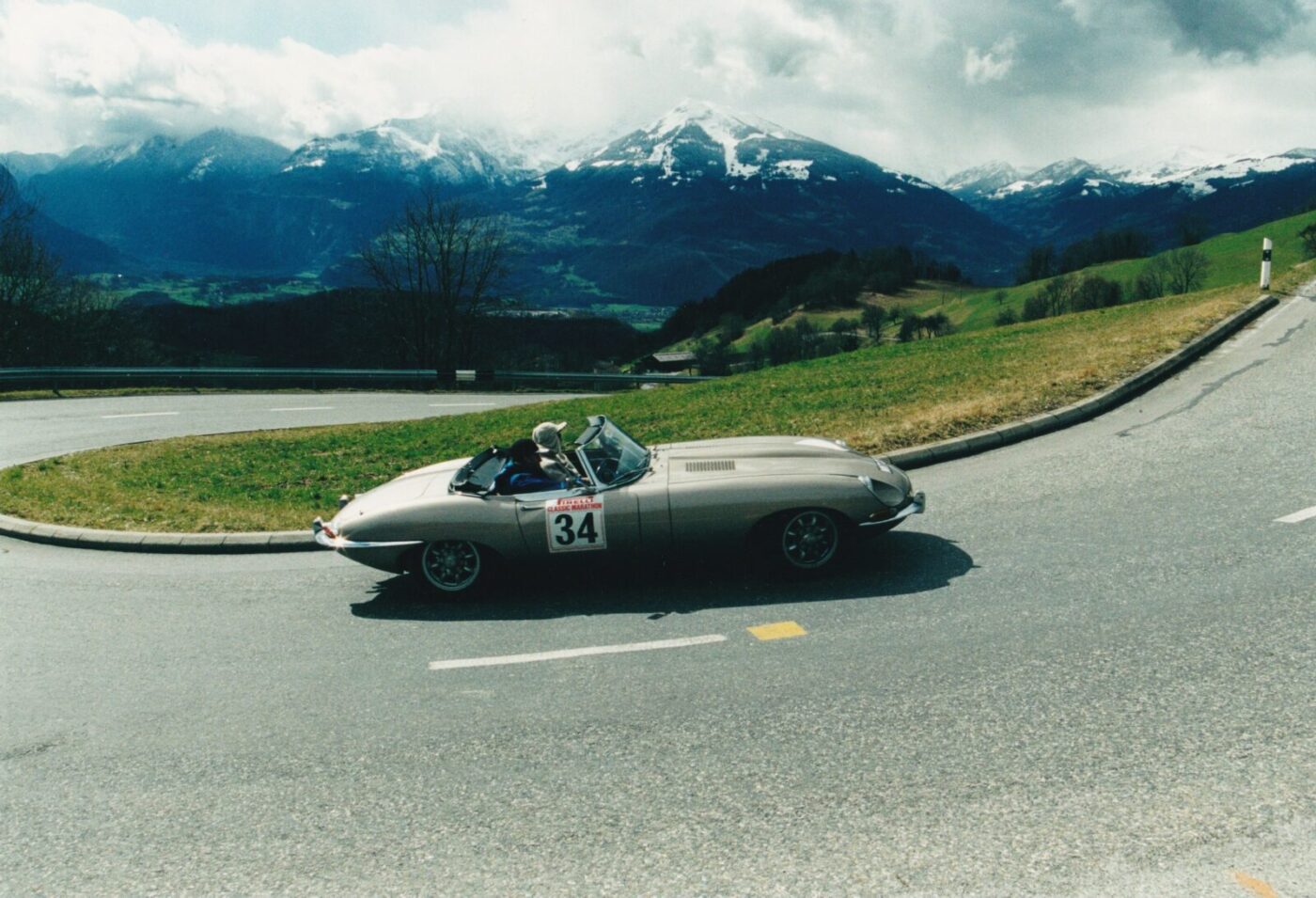
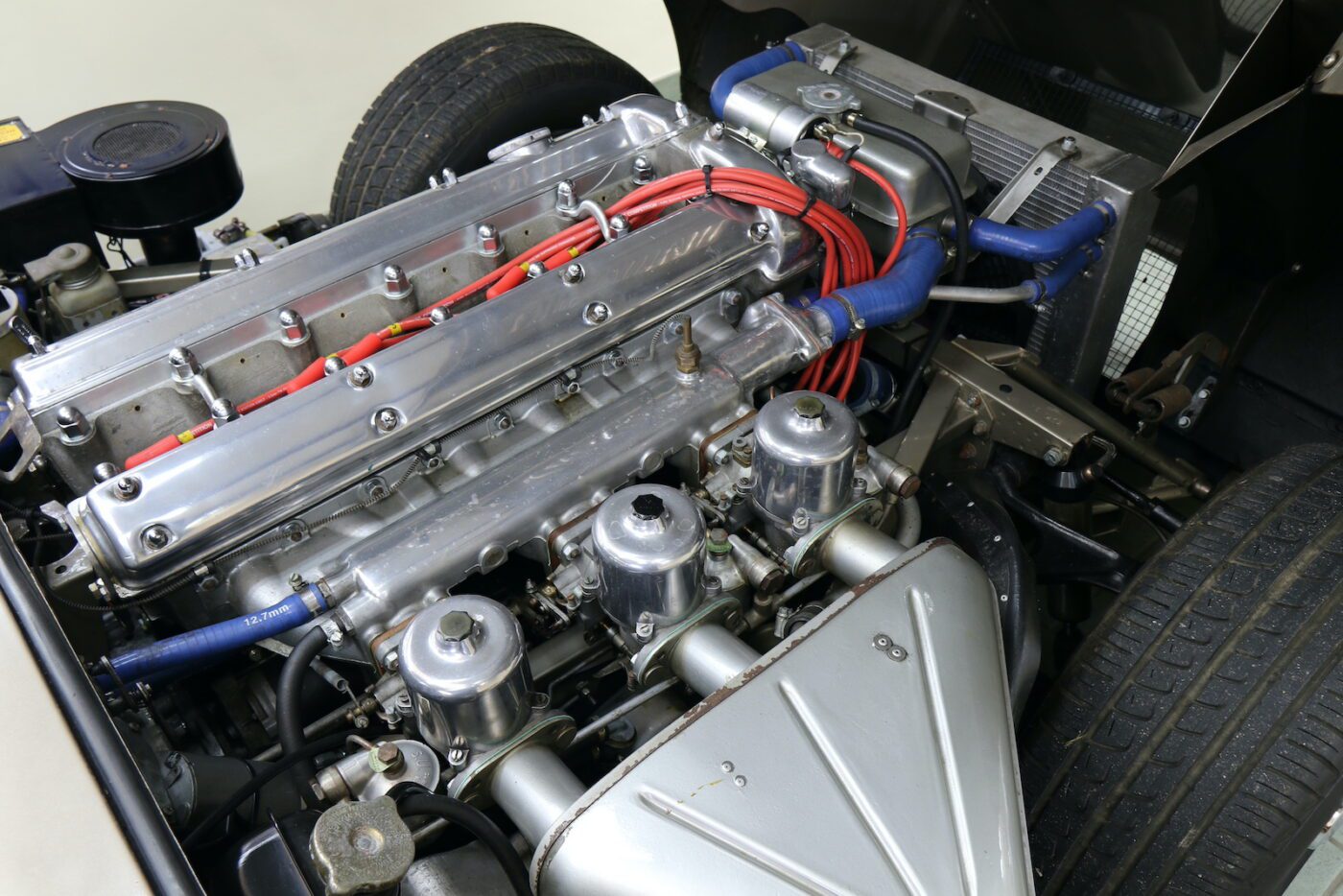
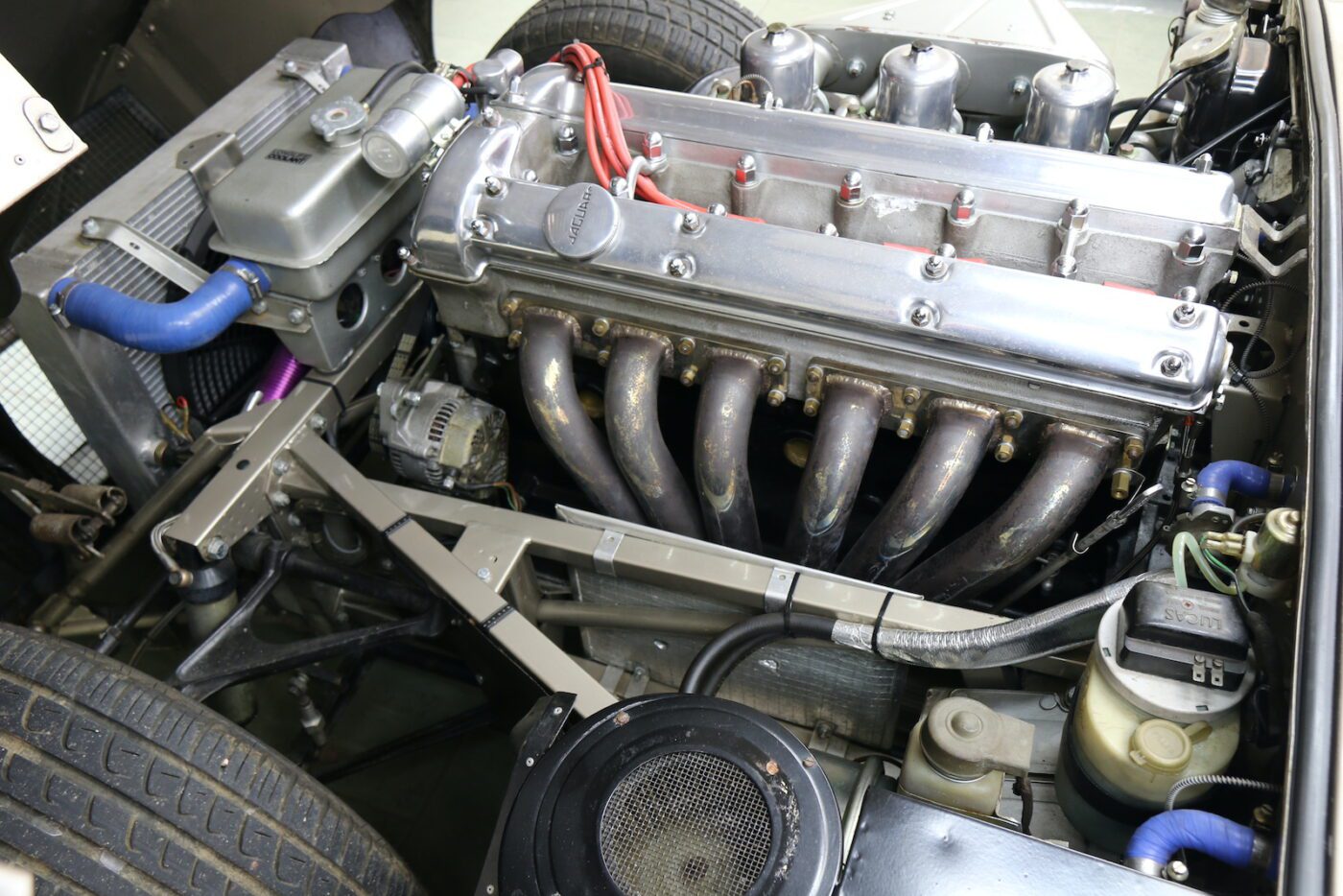
Remarkable achievement
It was a remarkable achievement for men and machine, a pretty much bog standard E-Type seeing off ex-works Healeys, super-lightweight MGBs, a Lotus Cortina and a nimble Cooper S, all in the hands of what Henry calls “Pirelli’s famous five” drivers.
“It was an amazing adventure,” he says on the phone, reliving the rally in some detail and pointing out the pivotal role car NKT 237F played in both his personal life and the development of the Eagle cars.
Not only was the ‘Marathon car’ the scene of his first solo date with partner Karen – a blast around the Sussex countryside the weekend before the marathon to bed in the engine – but the lessons learned rallying fed into some of the improvements necessary for the evolution of the Eagle.
Of the many E-Types that have passed through his hands over the years, this one means by far the most, and is scheduled to accompany Henry to the model’s 60th birthday celebrations at Shelsley Walsh in June – just as it did, along with Karen, for events marking the 30th, 40th and 50th.
“It would never be for sale, and Karen wouldn’t sell it either because it just means so much to both of us,” he says. “It was our first date on our own together, we did the Classic Adelaide together in 2002 and the Marathon 25th anniversary, returning to Italy, in 2013. It will definitely never be leaving us while we’re both alive and I would think it would stay as part of Eagle in the future.
“It’s the whole E-Type story for us; it’s the story of us making E-Types that work and the story of Eagle’s beginning. The linchpin all the way through has been the Marathon E-Type.”
Before we get to that defining Marathon, let’s go back to the late 1960s and a very young Henry first falling in love with the car that would dominate his life, spotting an E-Type in a driveway on the south Kent coast.
“I was about five or six and we’d go and see my nan in Hythe for Sunday lunch sometimes, and then on down to Greatstone,” he remembers. “On the way there, in Littlestone, was an E-Type coupe parked in someone’s drive, and I was always fascinated with them from there.
“Then in the early 70s there was a Cadbury’s Milk Tray advert where an E-type jumps over a broken bridge. It was just the car that captured the imagination as a youngster.
READ MORE ABOUT SOME OF OUR GREATEST CLASSIC CARS WITH
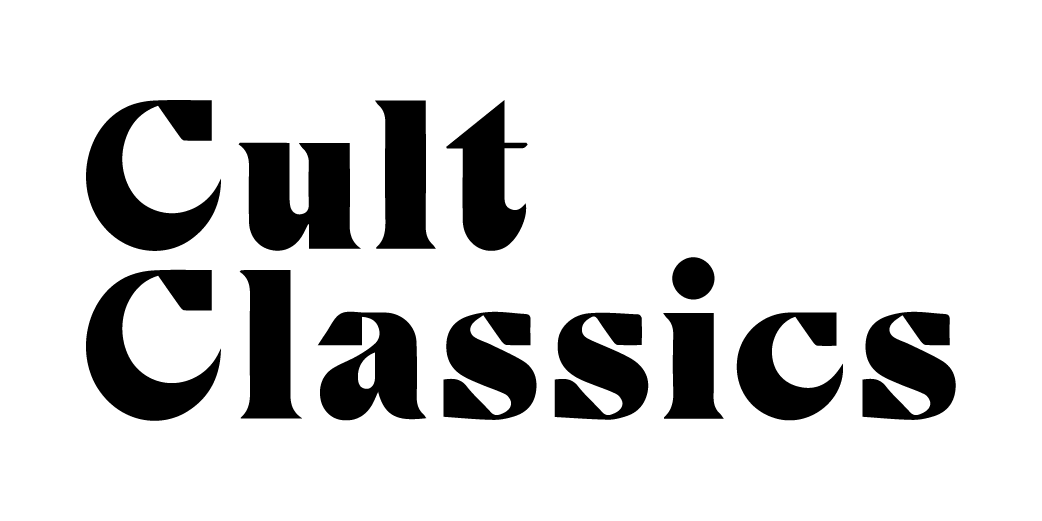
A series of articles on our Cult Classics site.
“Amazing, sensational sight”
“It was such an amazing, sensational sight even at that age. I think it was every schoolboy’s ‘wow’, because it must have seemed like a spaceship for people when you look back to cars of the late 50s, which is when the prototype was developed.”
Aged 12, Henry became the youngest member of the Tunbridge Wells Motor Club, seeking help to repair a broken diff on his mother’s Austin A40.
Garage owner Duncan Welch took him under his wing, telling him “I’ve got a diff for that but you’ll have to fit it yourself”.
“So I had to go and buy a socket set from the local motor factors, jack it up and just learn how to do stuff,” says Henry, now 57.
Duncan took him to production car trials and auto tests, and introduced him to marshalling at Lydden Hill race circuit before, aged 15, Henry had saved up enough pocket money to buy a rusty old “spares or repair” MG Midget for £25, paid for all in coins.
“Instead of revising for English O levels I was revising on how to rebuild an A-series engine,” he laughs. “Then my parents rented a farmhouse, which was great because it was down a farm track and I learned all my car controls with the A40 on full opposite lock between all the trees in the apple orchard – it was a great way of training.”
Those early self-taught forays in the art of car control would pay immediate dividends – Henry winning the south east final of The Observer / TVR Young Driver of the Year – and would later be put to good use on the treacherous Alpine passes of northern Italy.
After school, Henry enrolled on a three-year Diploma in Automotive Engineering at West Kent College, taking in work experience at Brands Hatch Race School and Rolls-Royce and Bentley specialist Martin Sargeants of Goudhurst.
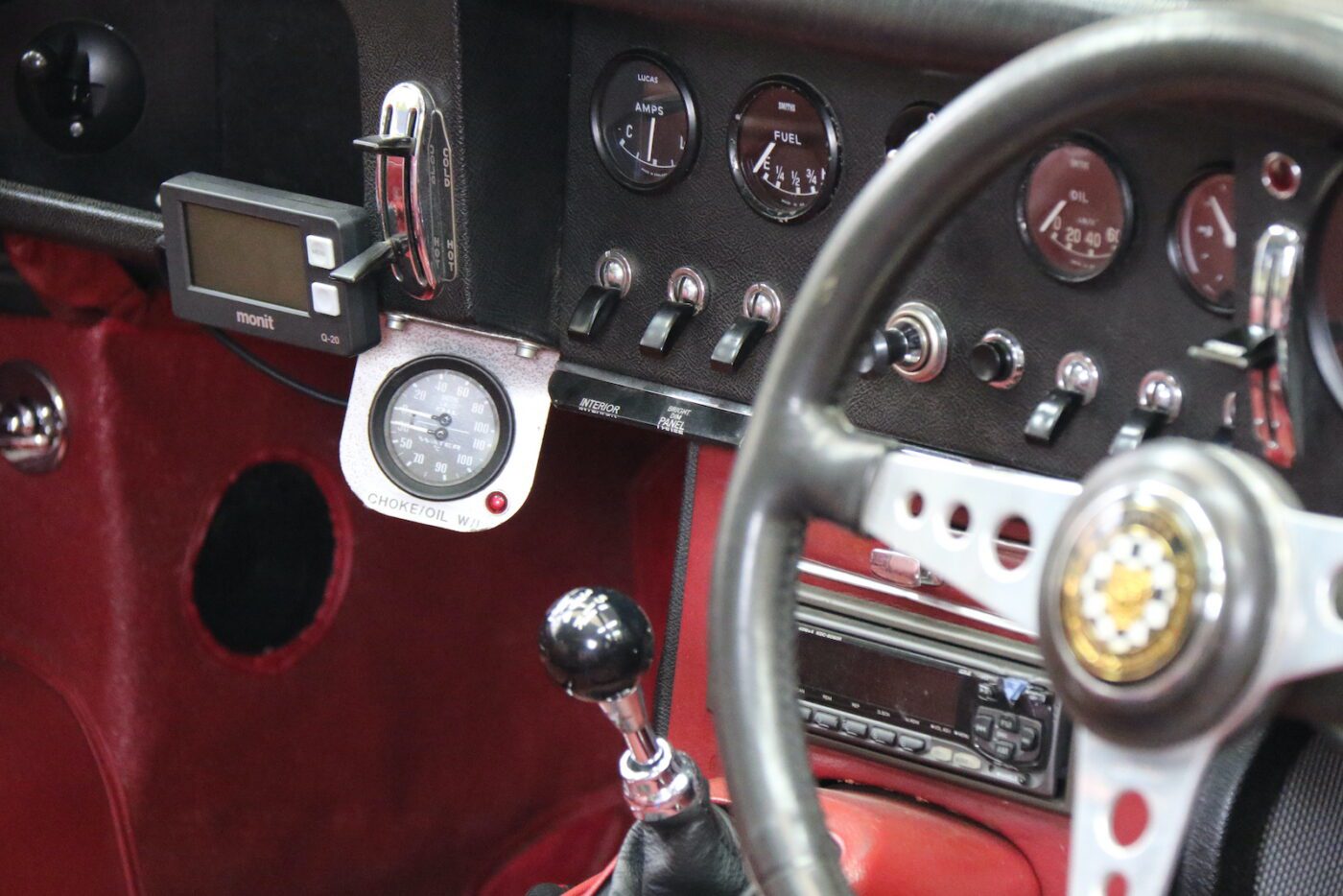
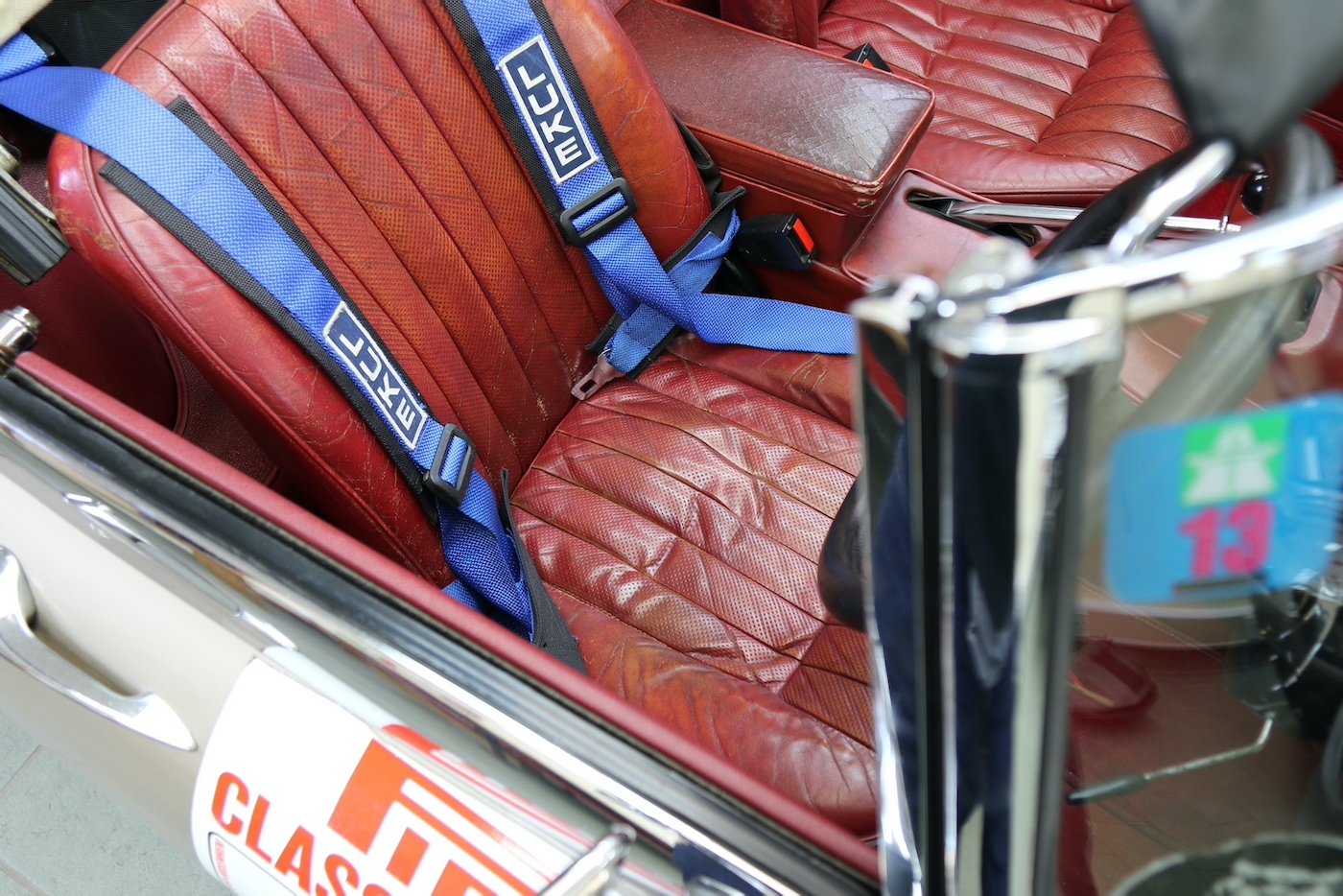
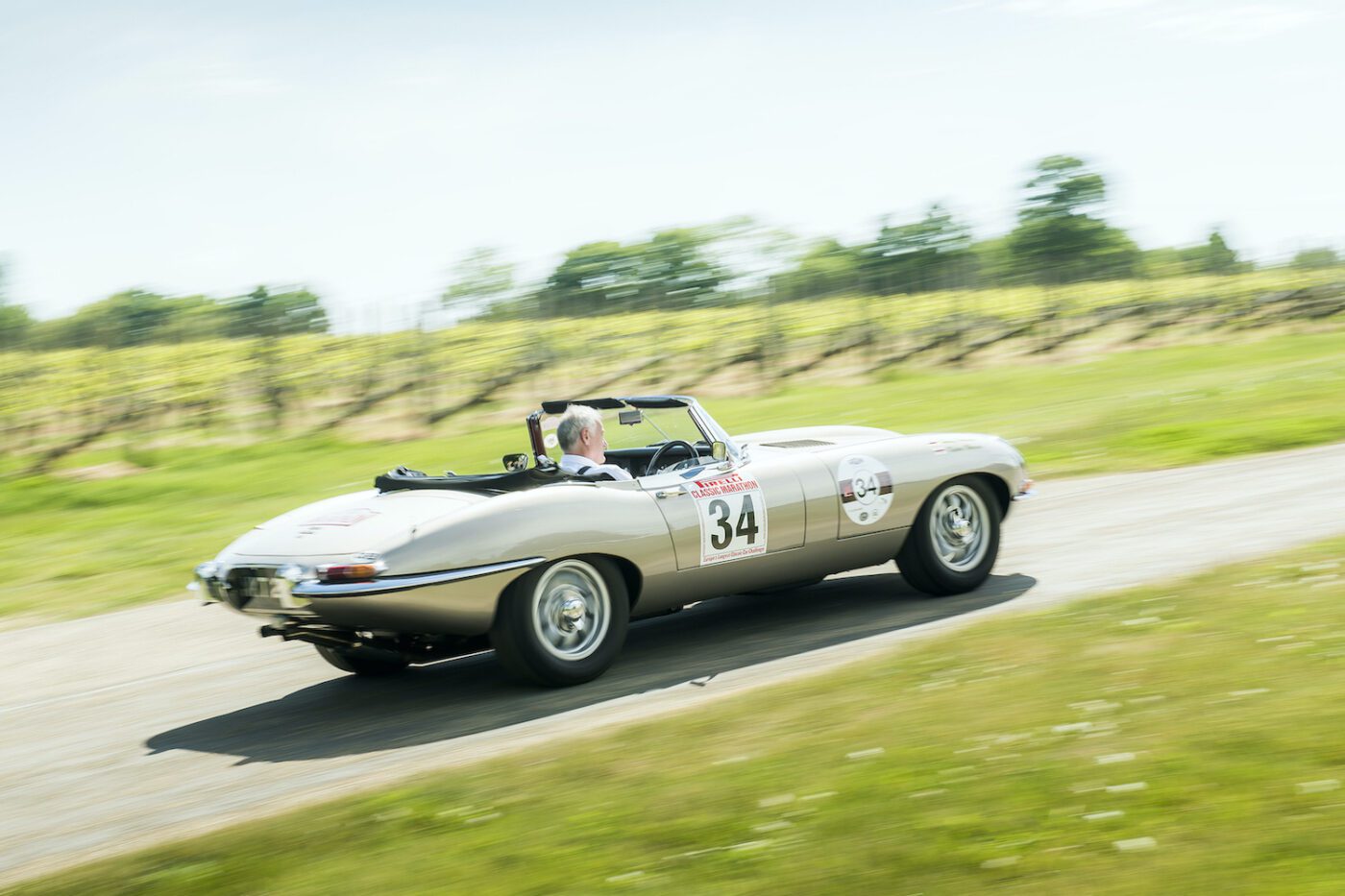
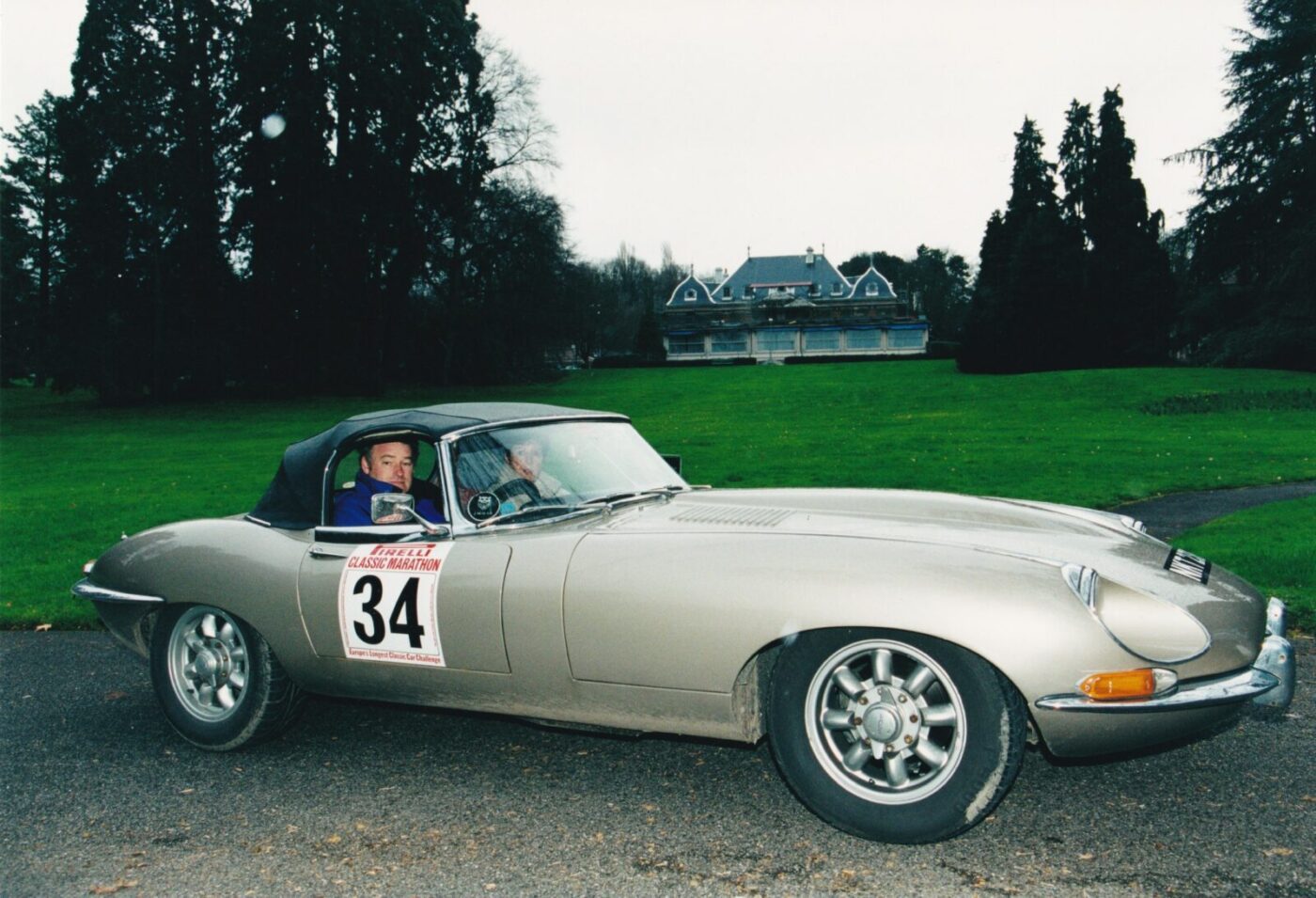
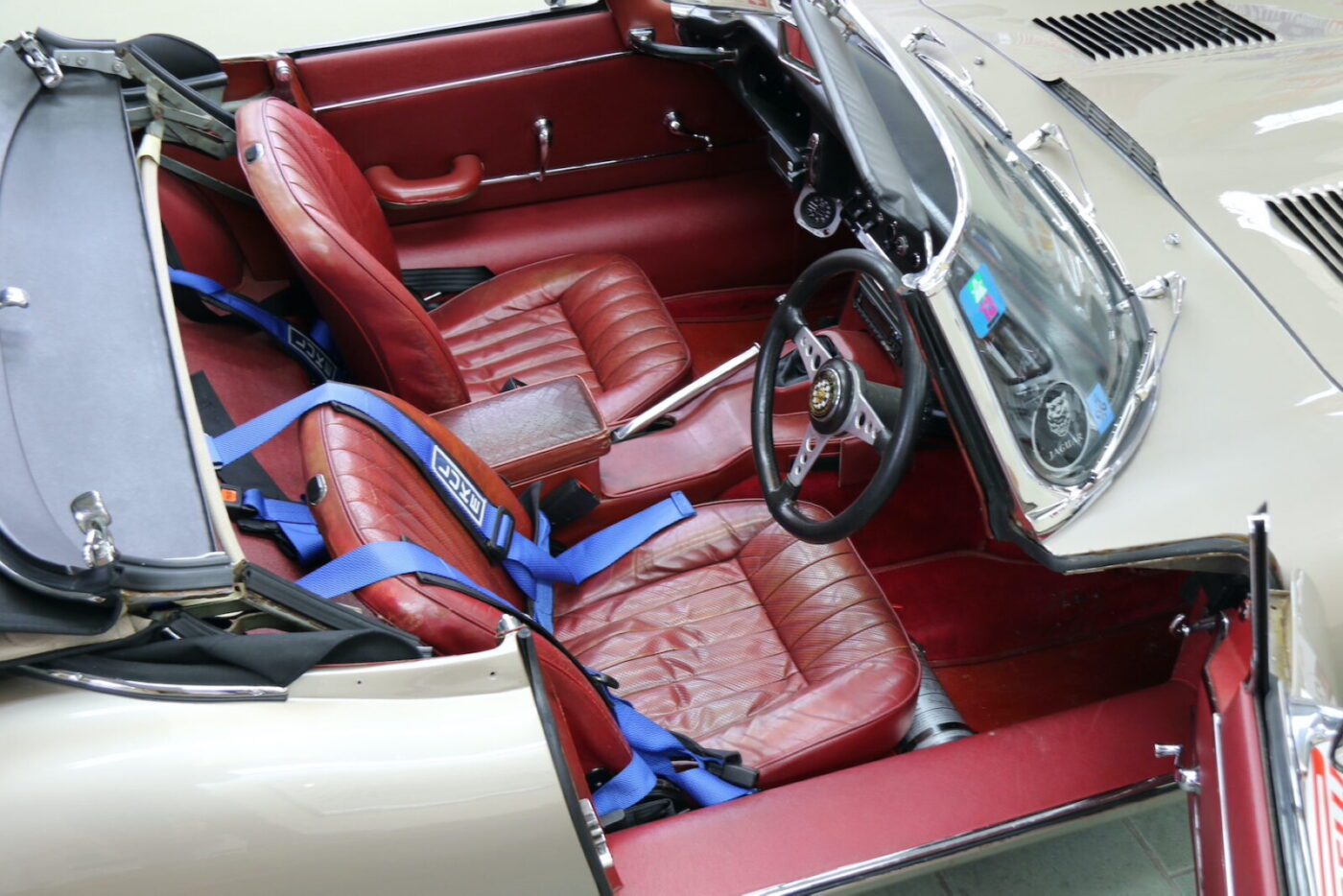
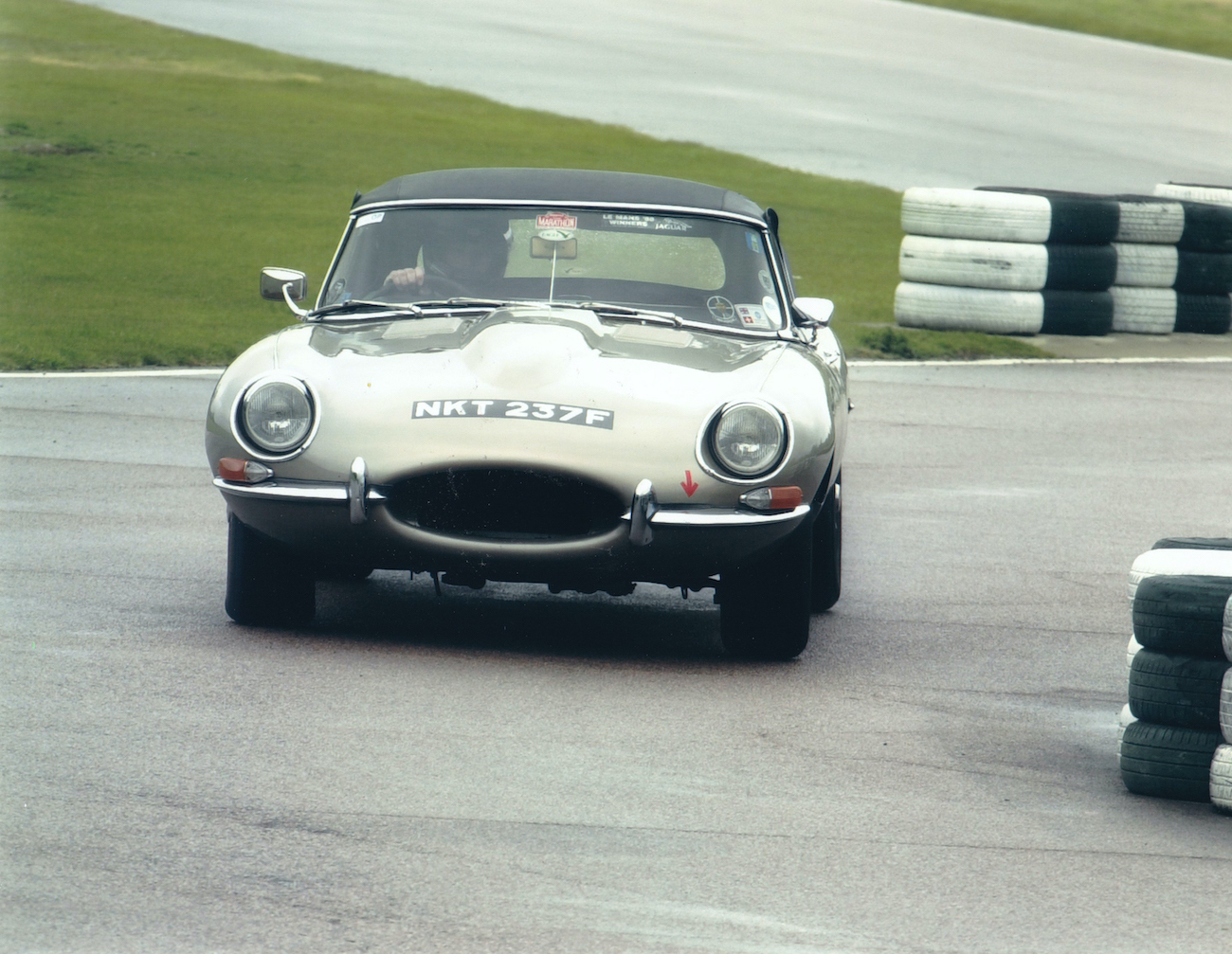
“An amazing time”
“I loved all of it,” he says, mingling at Brands Hatch with the likes of Barry Sheene and Frank Williams. “It was an amazing time – looking back you don’t realise what a privilege it was, being just 16 at the time.
“Now, you think ‘what an opportunity’, but it seemed to be normal when you didn’t know anything else.”
It was while on work experience at Sargeants that Henry had his first taste of an E-Type up close, a series 2 coupe in for an engine rebuild.
“The treat was to take it up the road for the road test afterwards,” he says, the experience further cementing his long-held aspiration to own one himself.
Before that dream could be fulfilled though, he went through a Puch M50 Sports, a tuned Garelli Tiger Cross moped – commuting on it from Tunbridge Wells to Brands Hatch each day during his work experience – and a series of cars, including a Triumph Spitfire bought with his first wage packet.
“It was a sort of baby E-Type because it had the hardtop and things, but I did the cardinal sin of going to look at it in the dark, in the rain – it looked beautiful under the streetlights,” he says.
“I went to pick it up on the Sunday and all the paint was faded, there was no soft top with it, the body had problems and so on and so on. It’s about learning all the time…”
A scrapyard Mk1 Triumph GT6 followed, then a “really scruffy” 1071cc Cooper S, which Henry fully restored to a high standard and then swapped, along with a Jaguar S-Type, for his first E-Type – an untidy and fully dismantled 3.8 fixed head coupe.
81.5% of customers could get a cheaper quote over the phone
Protect your car with tailor-made classic car insurance, including agreed value cover and discounts for limited mileage and owners club discounts

Another life lesson
He was still only 18, and it was to prove another life lesson, the seller having claimed that “all the body’s been done”.
“It had, but with P40 fibreglass matting and fibreglass paste, and it was totally rotten,” he says. “It was beyond me, so I sold or swapped it with something else. Another one that was on the learning curve!’
Henry was now working full-time at Sergeants, and his second E-Type was more successful, a series 2 roadster bought in late 1983, with a £2,000 bank loan to help pay the £4,250 asking price.
With his friend, Roger Collingwood, he was among the founders of Ferrari specialist Kent High Performance Cars.
The pair left after a few months and, in August 1984, headed down to Maidstone-based Eagle Racing, run by Peter Coleman and his son Scott, at the time focused on restoring and upgrading Lotus Elans and 1960s race cars.
“We went there on a Monday to do a fixed-price chassis change on an Elan and by that Thursday we’d made it a four-way equal partnership,” says Henry, who had sold his roadster and a De Tomaso Pantera to put £10,000 into the business, a small fortune for a man who had just turned 21.
With the £2,000 left over, he bought a 3.8 coupe, and Eagle already had an S1 4.2 roadster and a 3.8 coupe awaiting restoration.
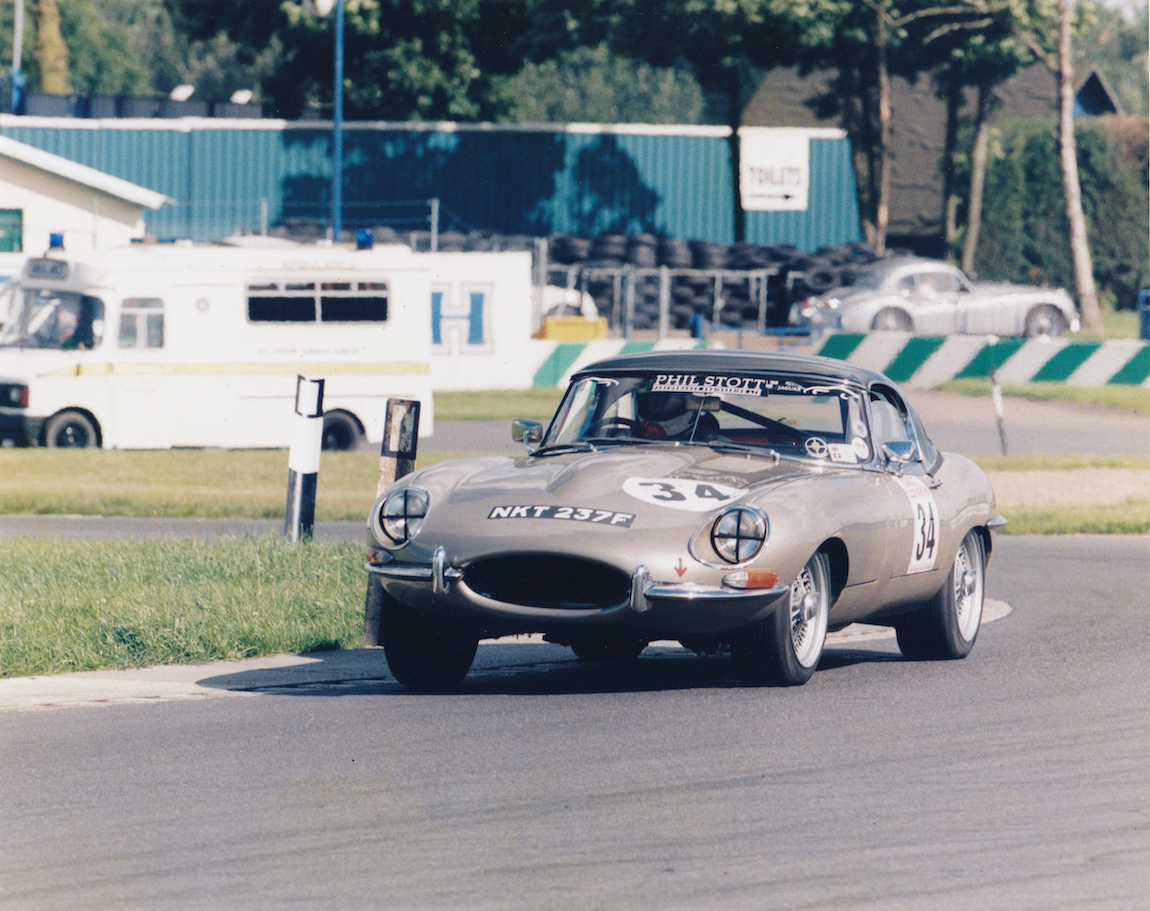
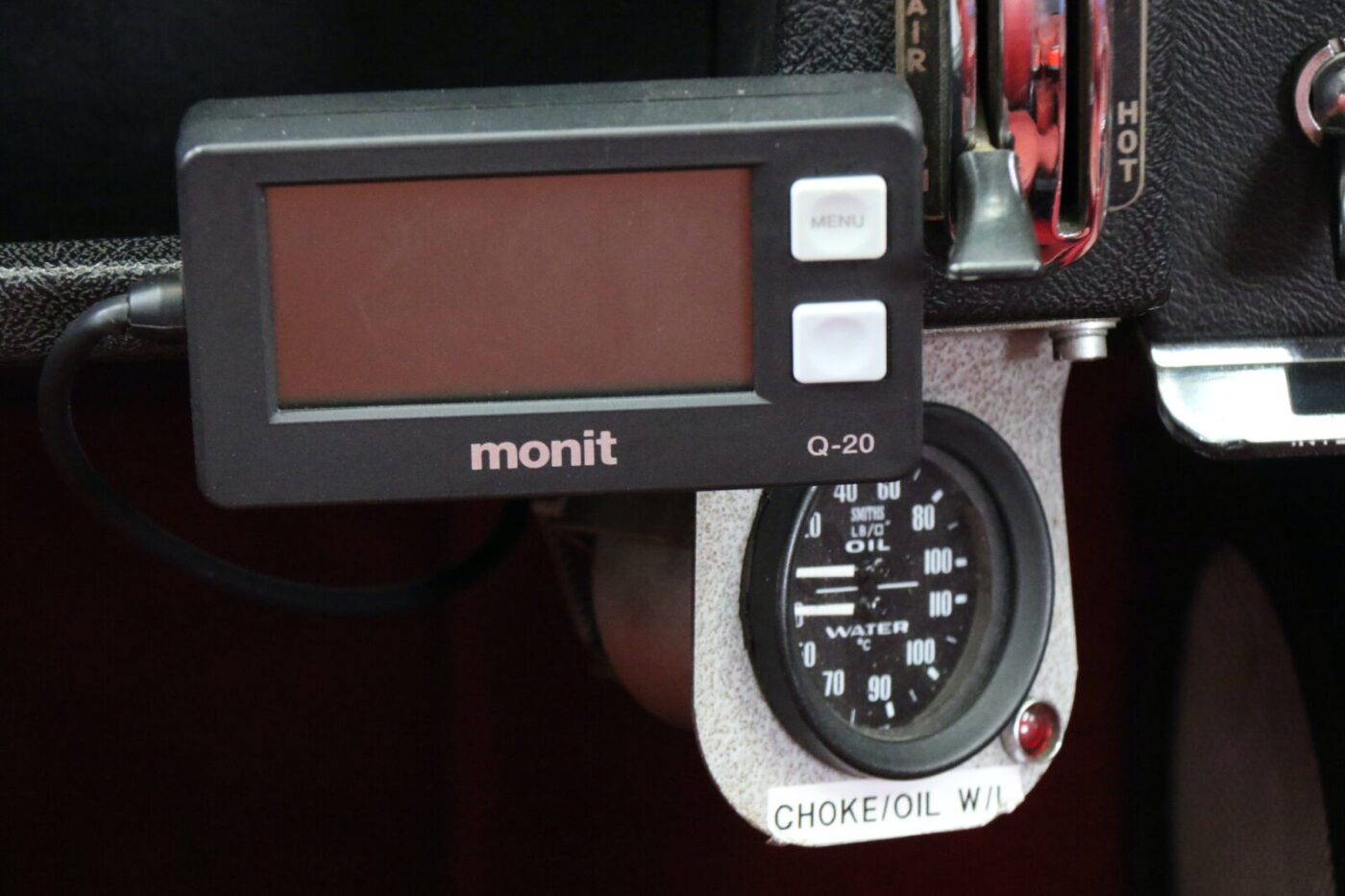
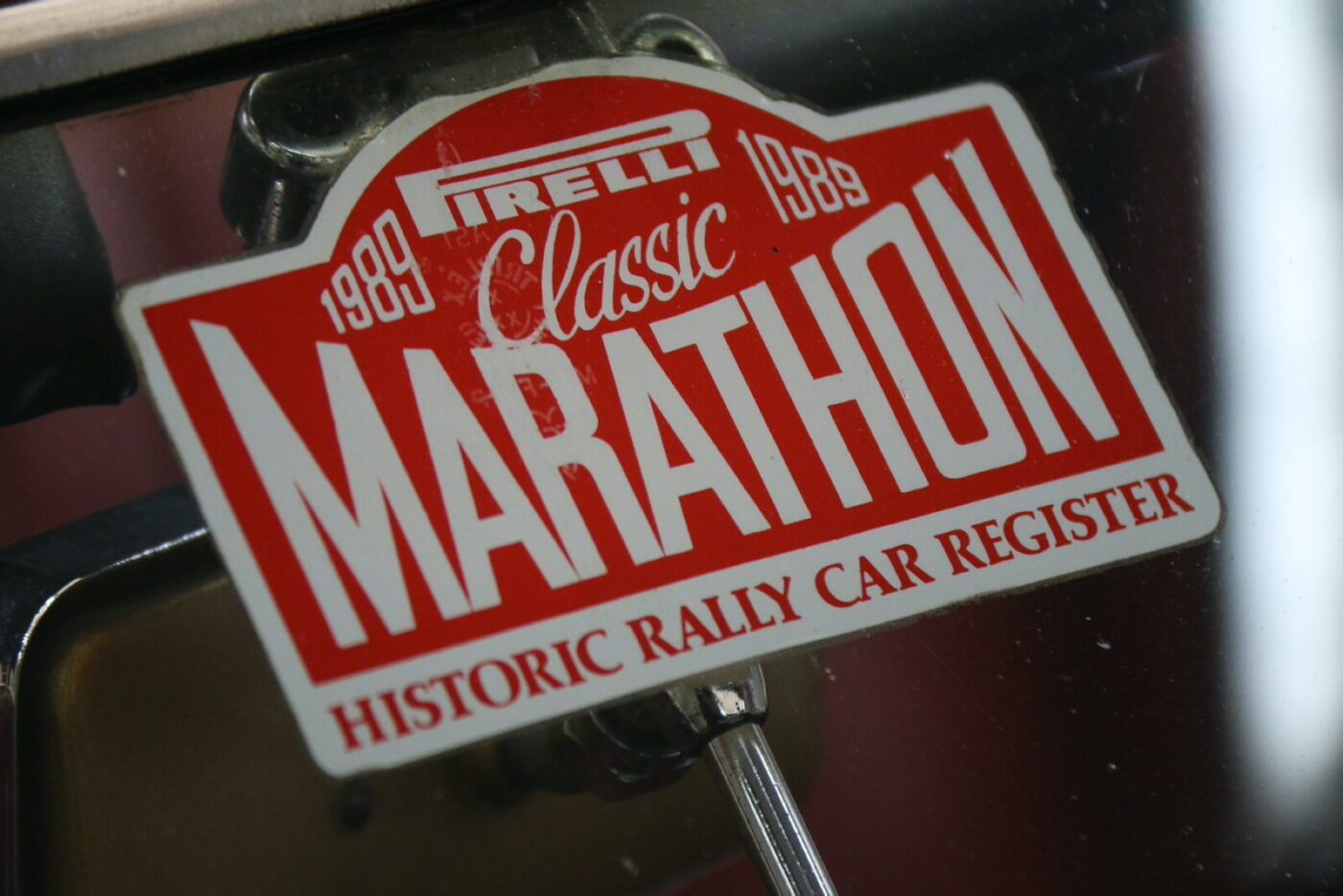
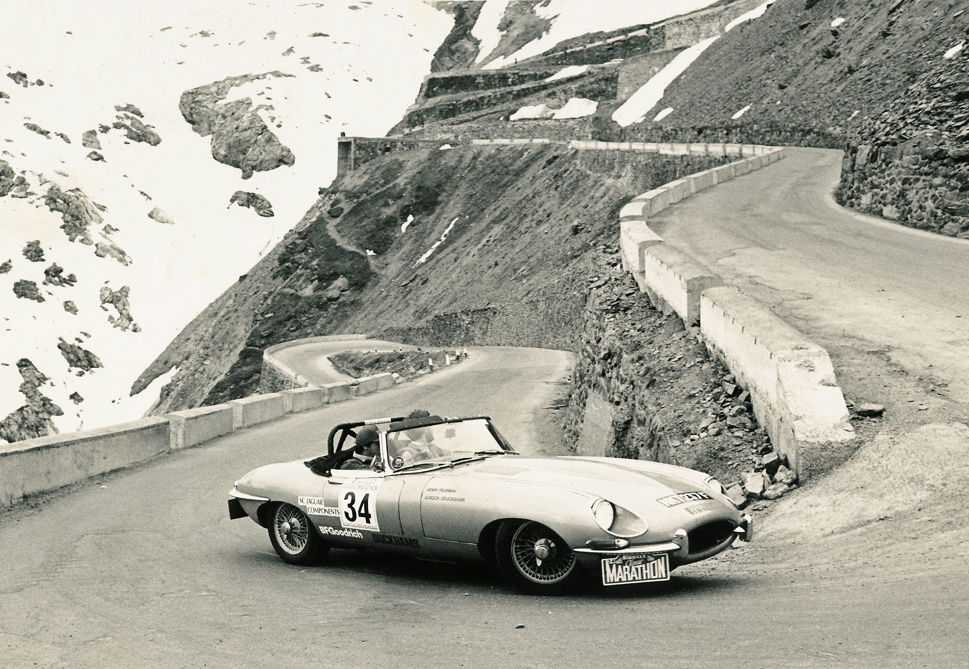
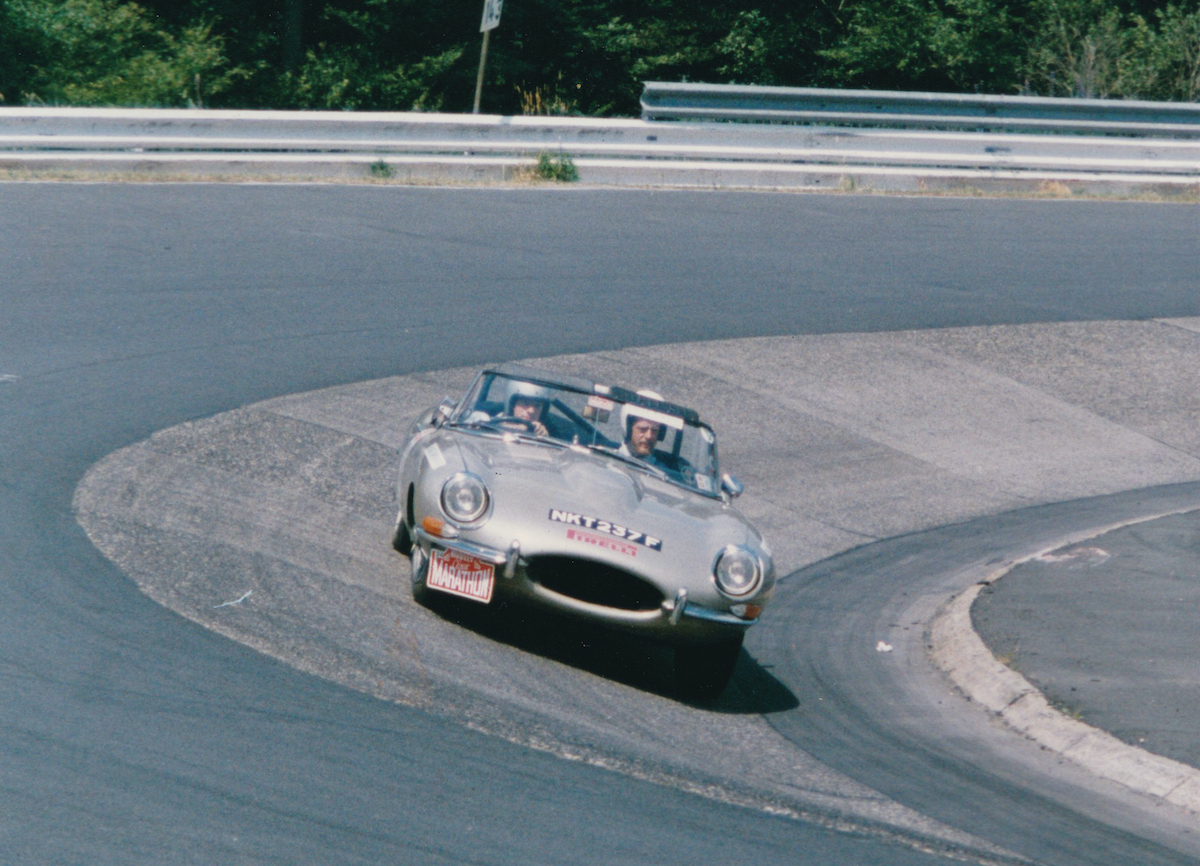
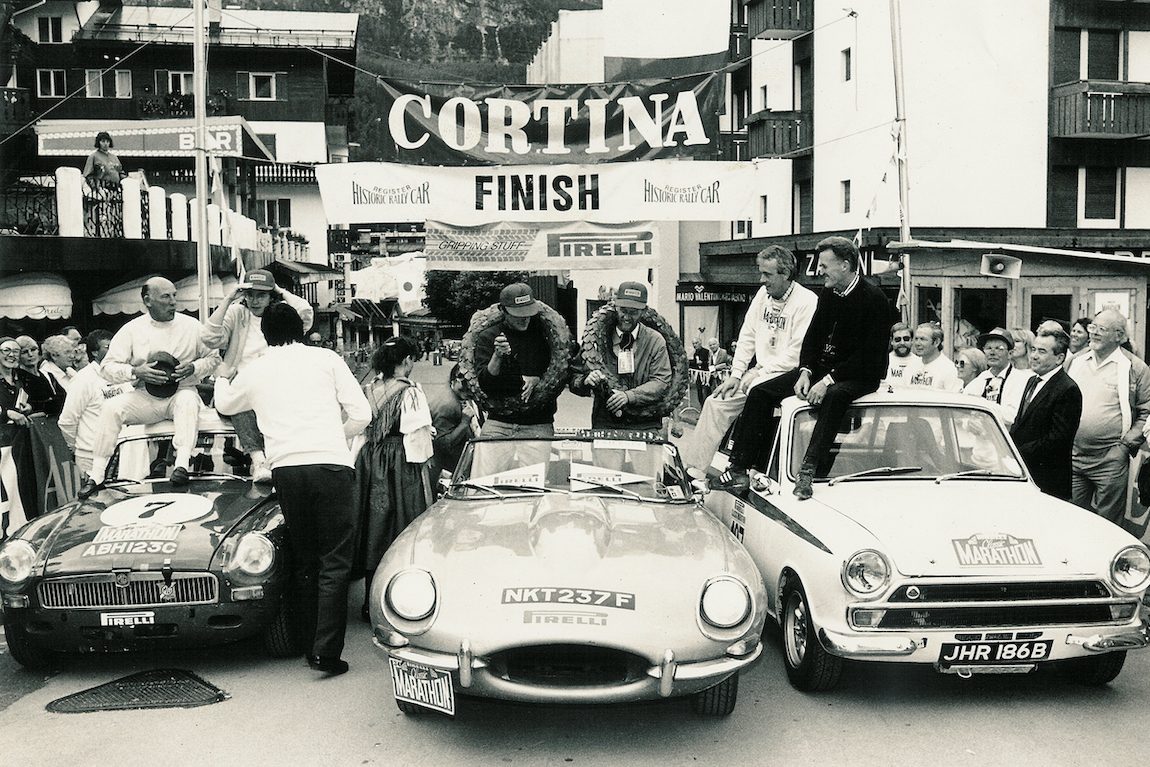
Move towards E-Type restorations
Henry immediately moved the business more towards E-Type restorations and, with Roger returning to Kent High Performance Cars, found himself in sole charge when Peter and Scott left for pastures new in 1987.
At around the same time, Philip Young, editor of Sporting Cars magazine, was hatching plans for a 2,500 mile classic car rally from Tower Bridge to Cortina and back – the very first long distance historic rally.
“A good friend, Roger Ludgate, phoned me up and said ‘there’s probably one space left, I could get you in it if you want, but it’s got to be an Aston or a Jaguar’,” says Henry, who was temporarily without an E-Type.
Roger put him in touch with Graham Marr, the second owner of a series 1.5, 4.2-litre roadster.
“He had just spent £12,000 on a new kitchen, and that was what he wanted for the E-Type. I bought it in October 1987 specifically for the first Pirelli Marathon in 1988, and entered it immediately.”
With his mentor Duncan Welch as navigator, Henry finished fifth – just two seconds off third – out of 130 cars in the hastily-prepared car.
Close behind, and locked in a week-long duel, was Paul Brace, soon to join Henry as technical director at Eagle and the man responsible for designing all of Eagle’s Special Edition E-Types.
READ MORE ABOUT SOME OF OUR GREATEST CLASSIC CARS WITH

A series of articles on our Cult Classics site.
“Such an adventure”
“It was amazing, such an adventure,” he says. “At the time we didn’t even know what steak tartare was and we were ill for two days because we weren’t used to it!
“Unfortunately it turned out that Duncan got car sick if he read a map – looking down the whole time with the mountain passes and hairpins got him queasy. So I had to latch on to another car and follow it the whole way, which turned out to be John Atkins and Rob Lyall in their AC Cobra, which won the Marathon that year.
The following June, Henry and the E-Type – car number 34 – were back at Tower Bridge, this time with Cruickshank holding the maps.
Seven memorable, and eventful, days later they were taking the garlands at the top of Tre Cime, initially more relieved than triumphant after several fraught moments including three punctures in one day and forgetting to put fuel in before the final tests.
“After the stress of the punctures and the fuel it was just relief,” he says, the only regret missing out on the photo that never was. “What really frustrates me is that they did a photo at the top with the ‘famous five’ and they were all so friendly and chatty all through the event and I think ‘can’t I beam myself back and stand with them so there’s a photo of myself with them?’
“All the press stuff was following the superstars, which was fine, but at one point Gordon said ‘we’ve been leading this for two days now, there’s a major historic rally and you’re not even talking to us’.”Perhaps to redress the balance, Gordon wrote up the experience for the August 1989 edition of MotorSport magazine.
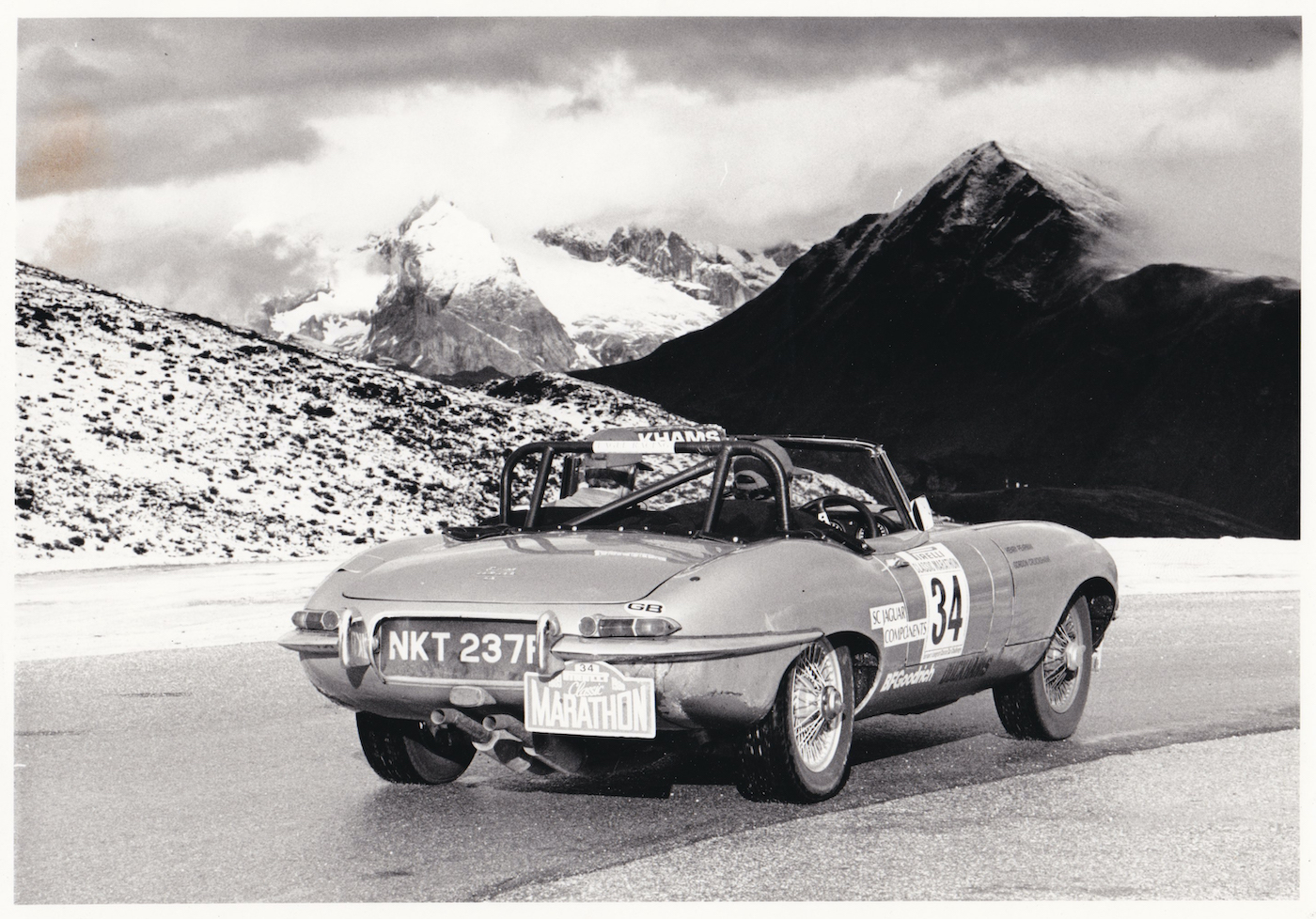
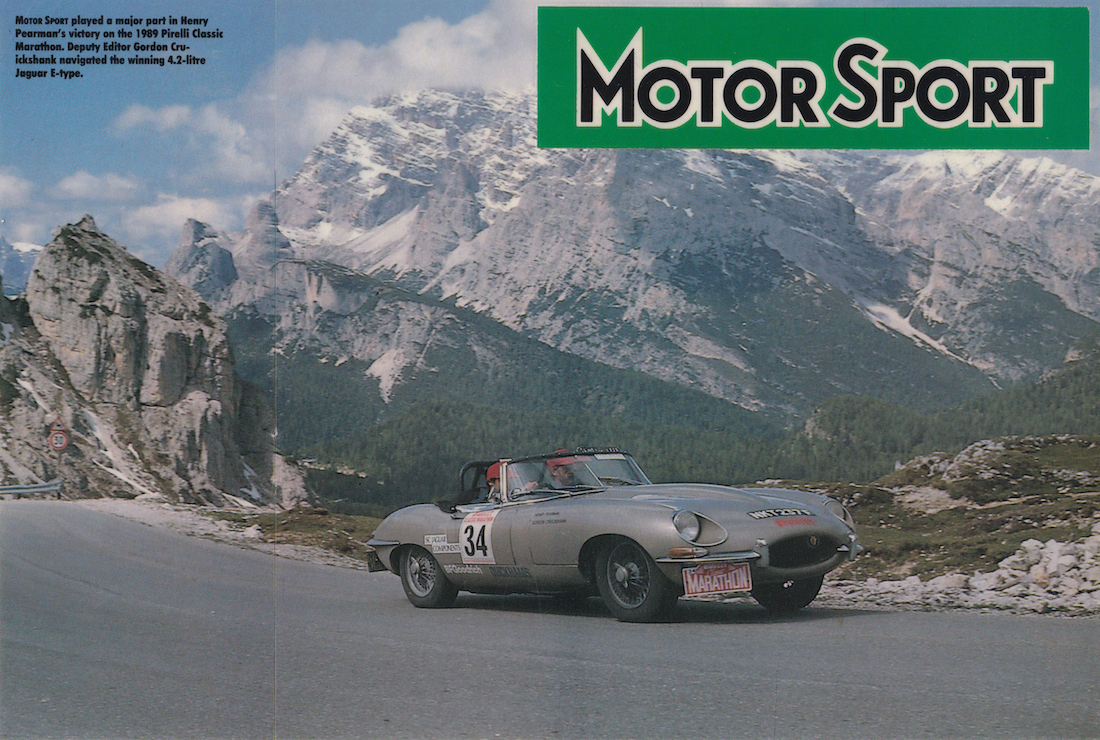
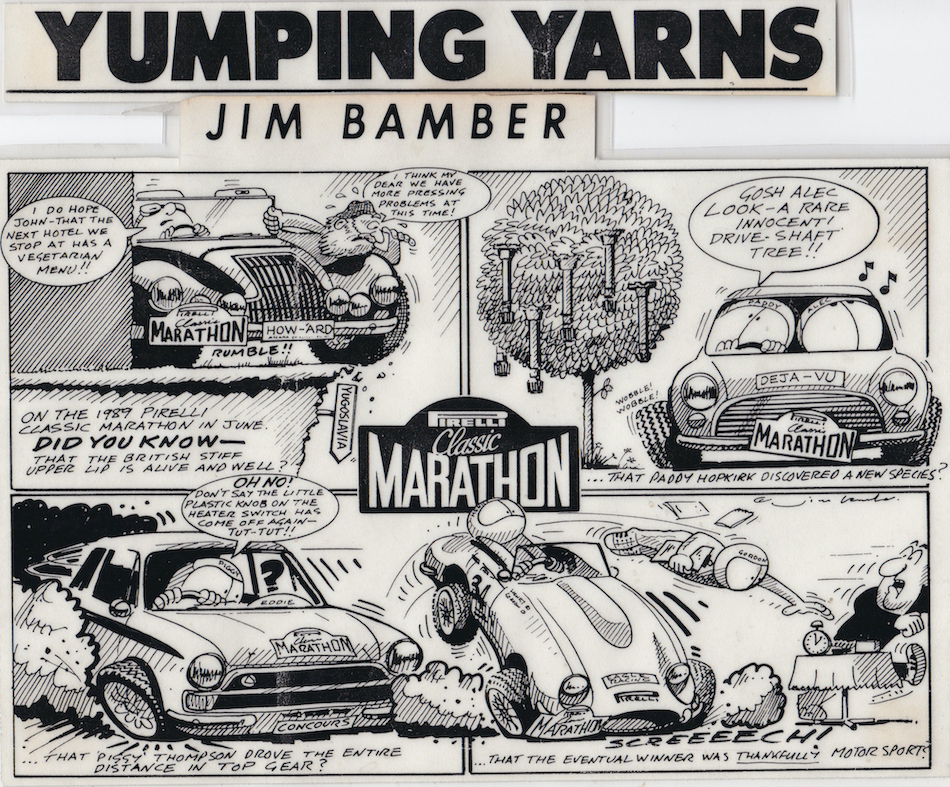
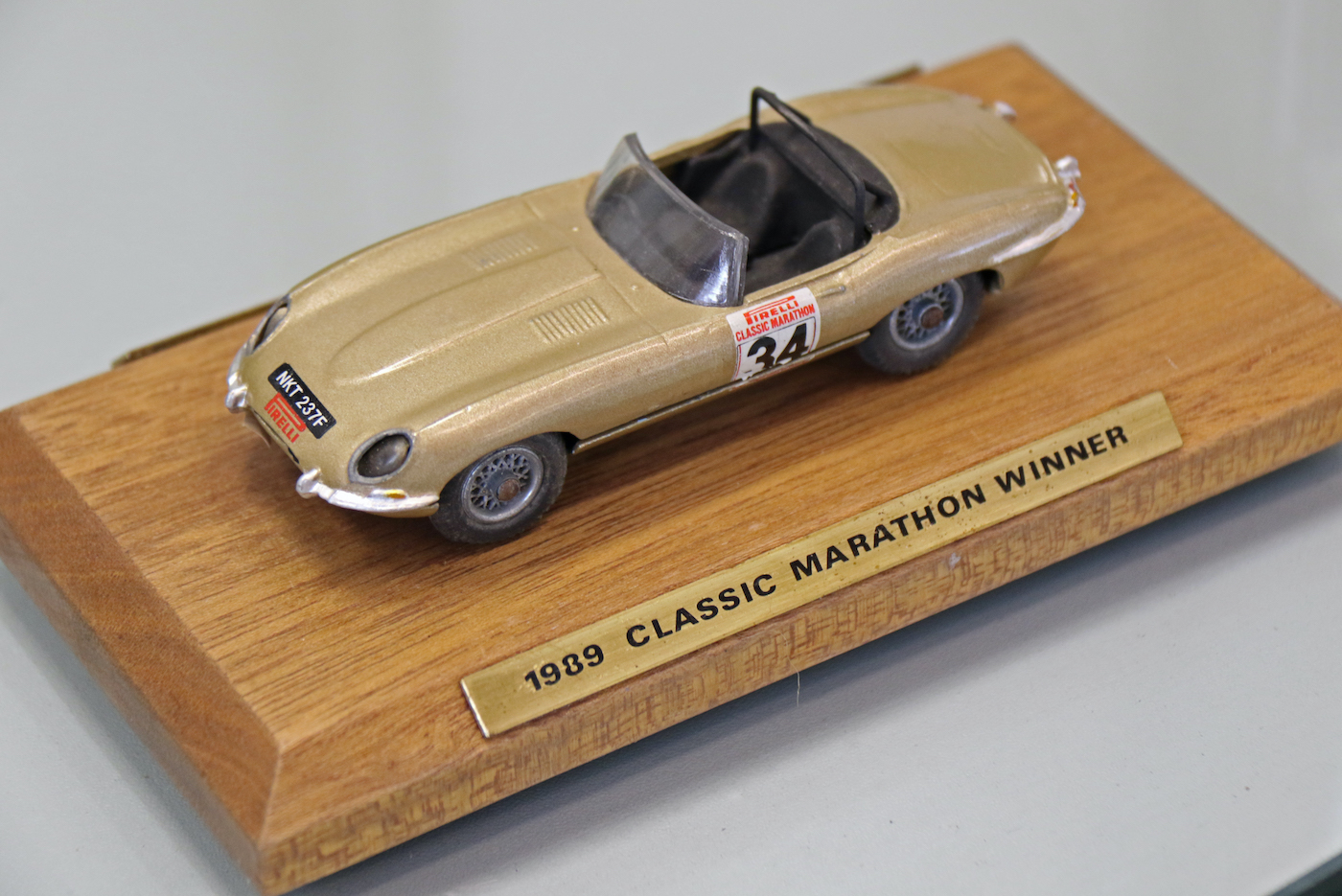
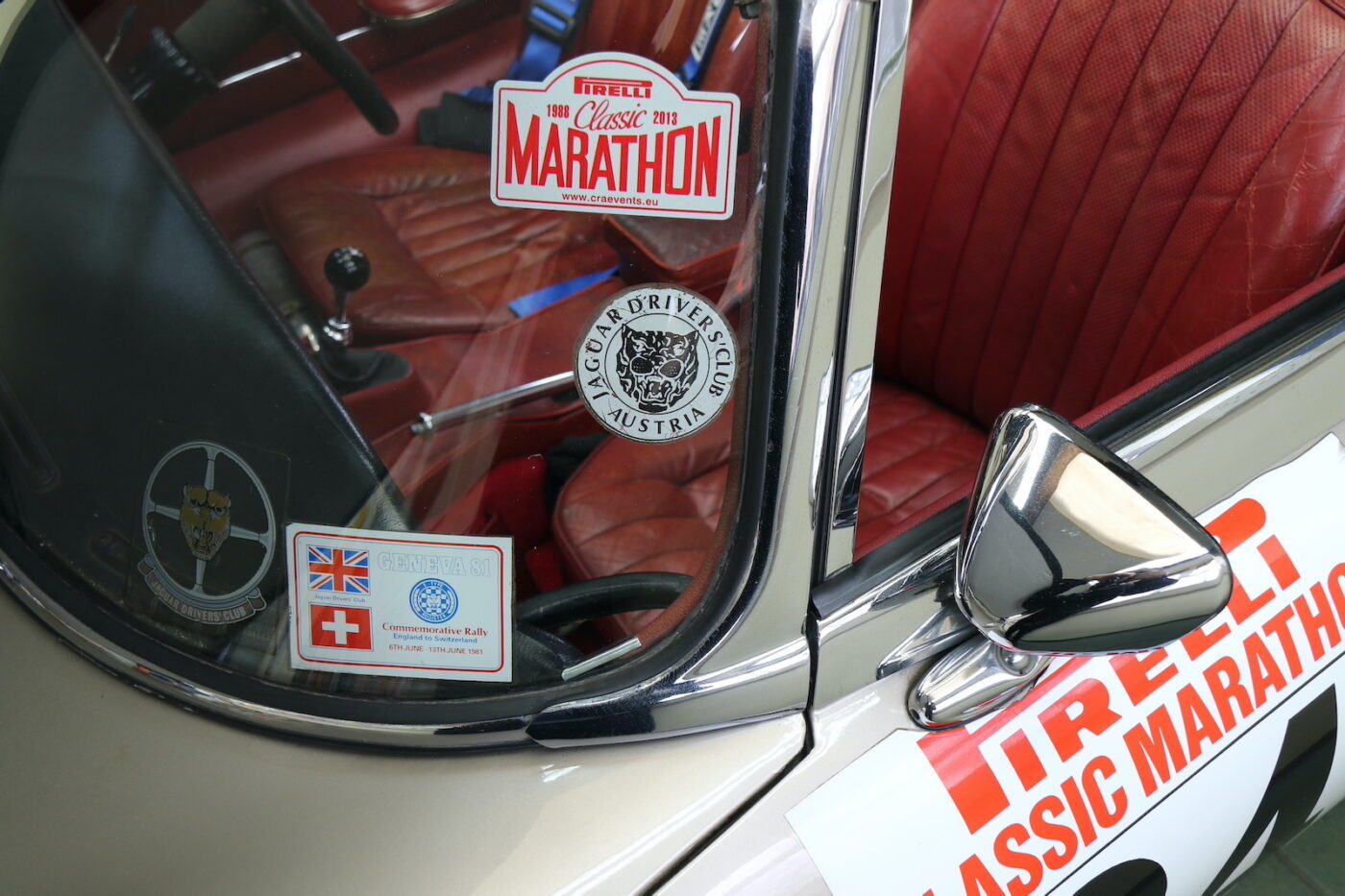
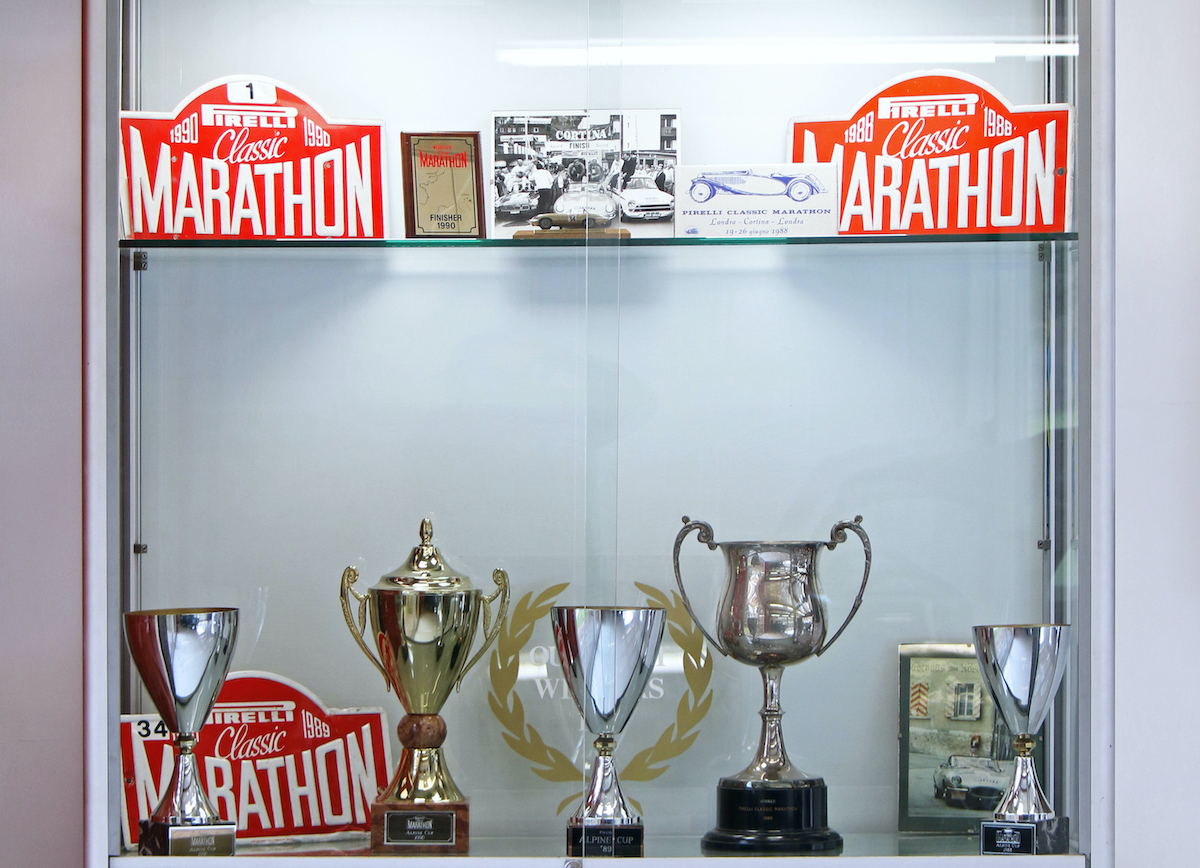
Spectacular Stelvio Pass
Several moments stand out, not least the spectacular Stelvio Pass, with Henry and Gordon weaving through dozens of hairpins in the fastest time to take the overall lead.
“I was just in the mood with the Stelvio and everything clicked,” he remembers. “At the top the rear brakes were literally pretty much on fire – there was smoke pouring out of the back of the car, and the overflow of the radiator was pouring water out as if you’d turned a hose on full power.
“Paddy Hopkirk came up to me and said ‘I had one of those, it was awful, couldn’t get it round corners, it’s amazing how that’s going’. We’d improved it a bit from the first rally and it was the beginning of what Eagle became afterwards.”
Then there was the Croce Domine Pass, running with Moss in his MGB.
“We were on the road together and Stirling was behind me and said ‘don’t worry old boy, I won’t go into the back of you, I’m just saving the brakes’. We had our own private race, which was great fun.
“You look back and think ‘that was just incredible, if you could go and relive it again you would’.”
The first of three flat tyres struck after crossing over into what was then Yugoslavia, with Henry and Gordon ready to set off on the first section of the day.
“The camaraderie was fantastic – David ‘Piggy’ Thompson was running in second place and he and the others were helping get the trolley jack out of the back of the E-Type, which was fully laden with spares, and get the tyre changed just in time,” he says.
“I’d taken loads of tyre weld, so put that in the punctured one just in case, but I thought ‘we can’t have another puncture surely’.
“It’s all cobbled passes in Yugoslavia, really quite rough roads, and on our way back in the afternoon we felt it wasn’t quite right, got out…flat tyre.
Waving Stirling Moss
“Stirling Moss went past and waved, then turned round and came back to see if he could help. We put the other wheel on with the tyre weld and carried on, thinking ‘let’s just get back now’.
“We had another 45 minutes to go, up over one of the big passes to get back down into Cortina, had just set off and had another puncture. It was ridiculous. I said to Gordon ‘we’re not supposed to win this rally are we?’
“I then got out, emptied all the spares and tools out of the boot and fitted a new inner tube, having, it was said ‘ridiculously’, taken a set of tyre levers and a foot pump. Then it started to rain…”
As if that wasn’t enough, the E-Type’s low brake fluid warning light, which doubles up as a handbrake warning light, then flashed on.
“We had to stop again, because if a brake seal had gone in a caliper and we lost our brakes on one of these hairpins, that’s the end of us,” he says.
“It was fine, and it’s another Eagle mod we do now to fix the handbrake light switch bracket, which flexes, and that’s what was happening. Then we had roadworks, red lights for ages, and to get to the control first as car number one on the road I had to drive as fast as I could. It was crazy.”
Come the last day, Friday, and with just four minutes before their book-in time, Henry and Gordon realised they had forgotten to refuel.
They were again indebted to their fellow competitors, who donated a can of petrol, enabling them to complete the rally in first place.
“It was a hard thing to do, and looking back I’m wearing myself out just thinking about it,” he laughs.
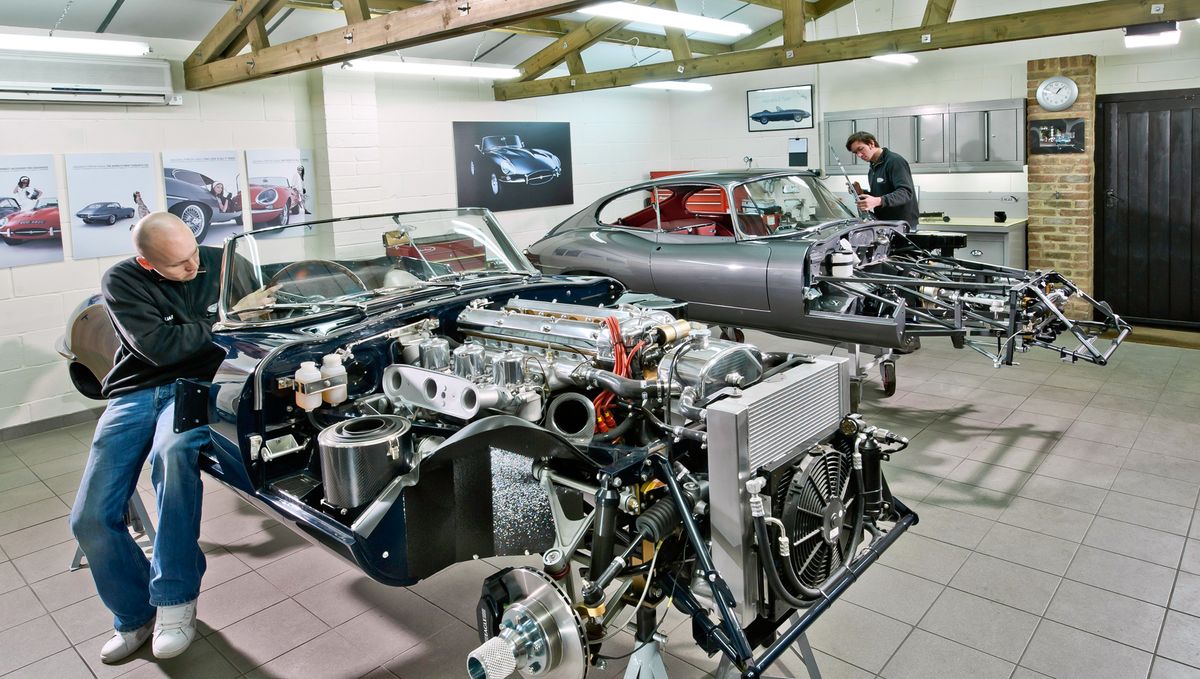
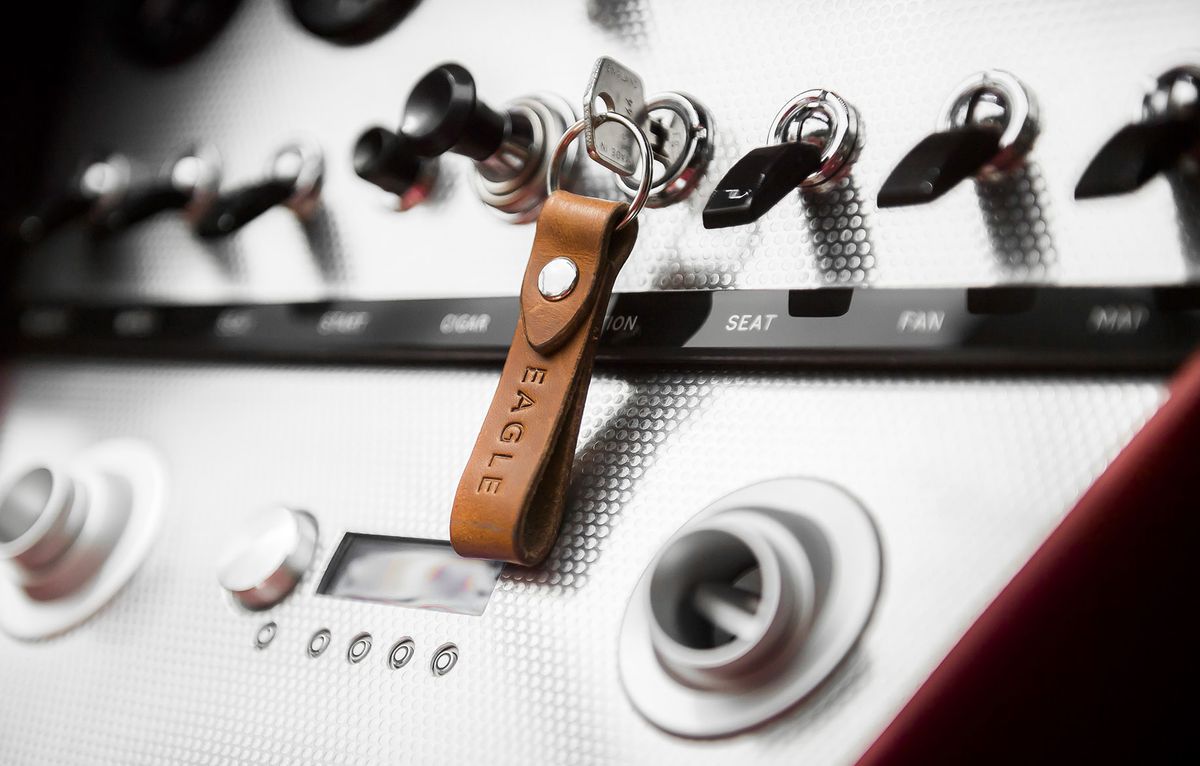

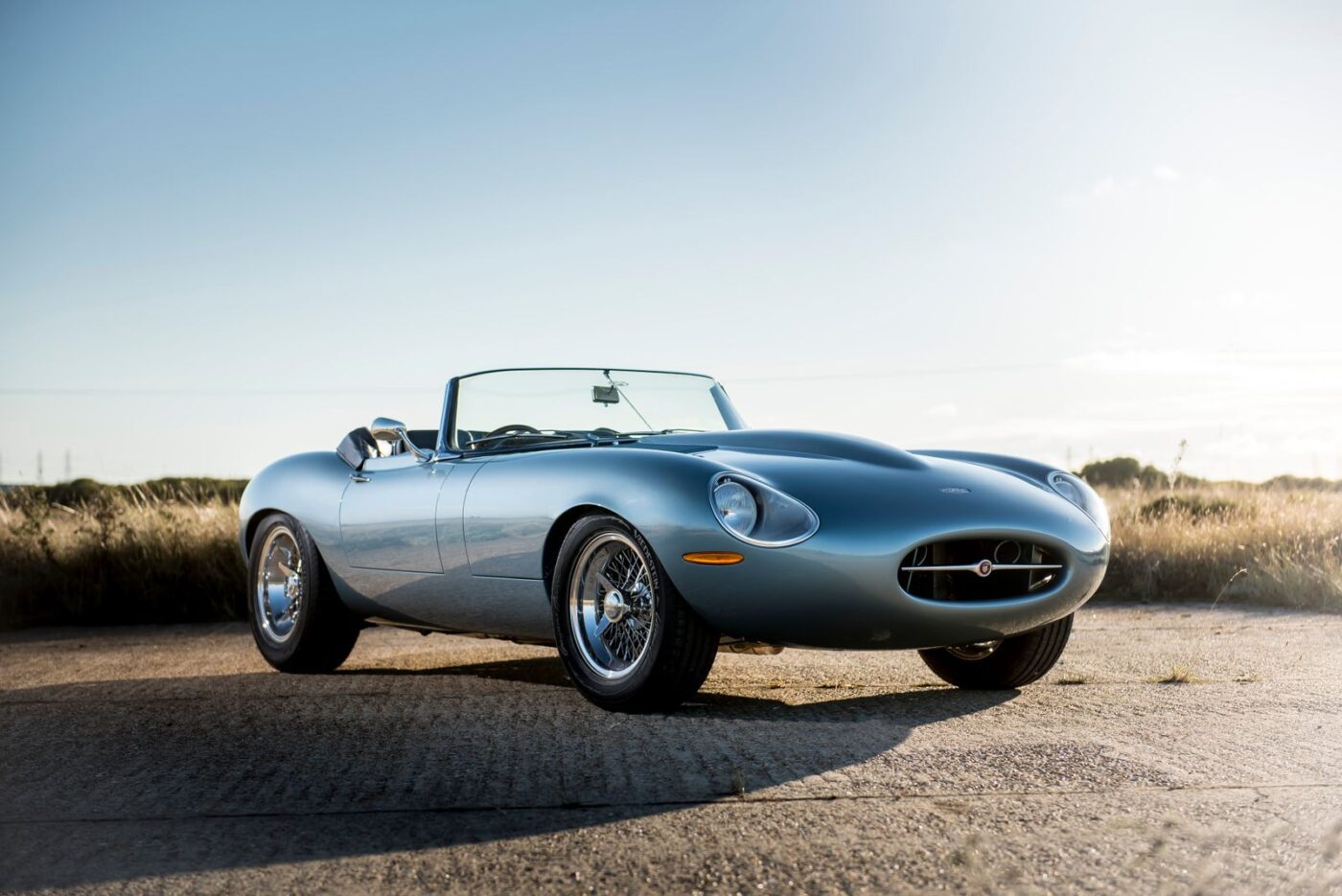
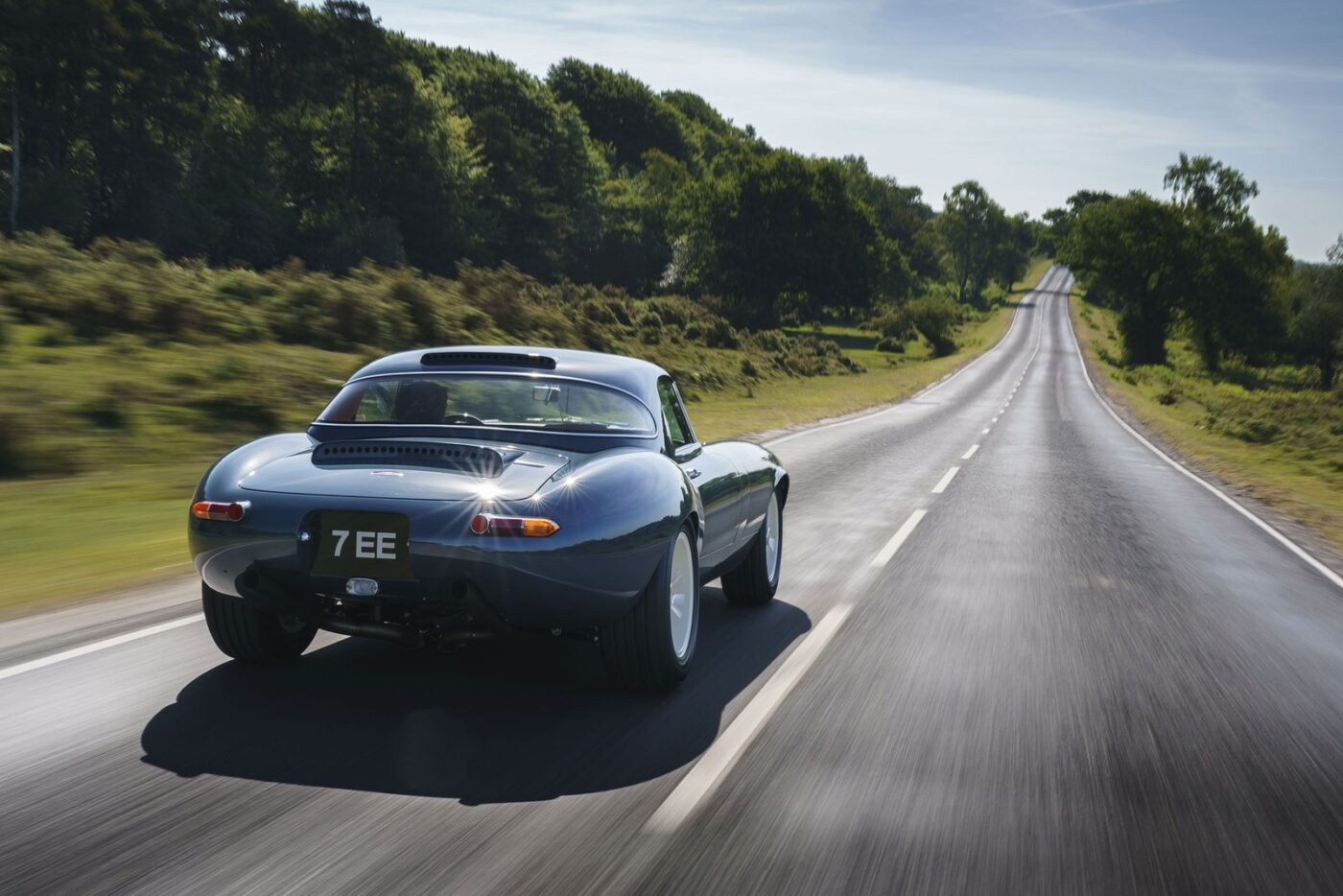
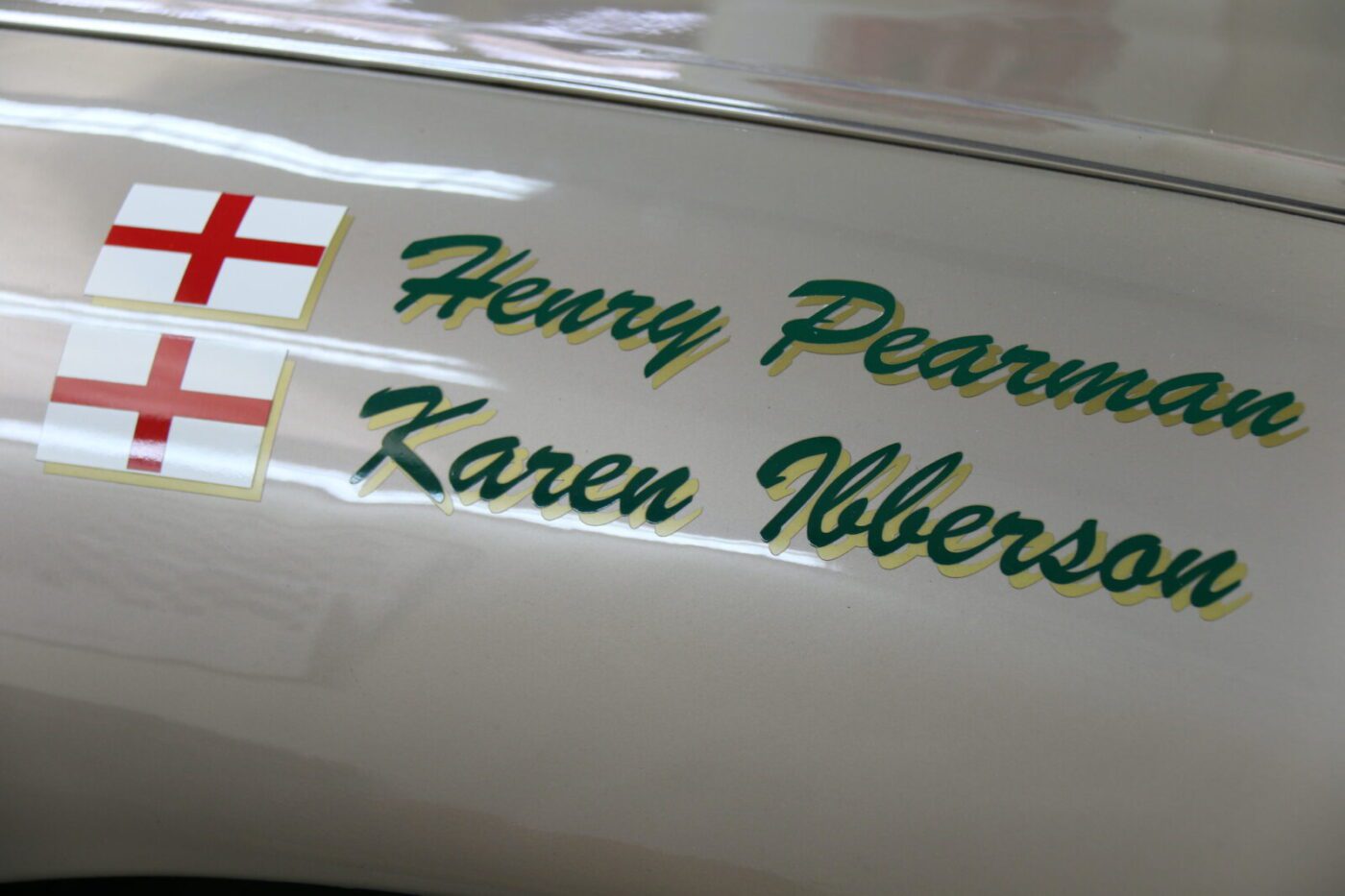
Proudly wearing Number 1
The Marathons cemented his friendship with fellow competitor Paul, who joined Eagle in the summer of 1989 before they competed together in the 1990 event, not in the E-Type but in a Daimler Dart SP250, proudly wearing Number 1.
“Philip Young asked a previous year’s winner to return in a different car,” says Henry, the pair becoming one of just four crews to earn a coveted Alpine Gold Cup, awarded for three consecutive penalty free Alpine wins, at the end of the 1990 event.
The company had been steadily growing, but three things combined to take Eagle – and the E-Type itself – to a whole new level.
First was uncovering the car’s flaws in the Marathon, which “fired the first improvements”, says Henry, followed by a driving holiday with Karen in the Black Forest in a borrowed, then modern Porsche 911SC.
“Then I understood 911s, because they just work,” he adds. “You can drive it flat out and it doesn’t get hot, and the brakes are perfect, fuel consumption is good. I thought ‘imagine if you could make an E-Type as usable and as practical as this’.
“I was always obsessive about things working properly, and was inspired to apply this to the cars we restored and sold, making sure they were perfect.”
Paul shared Henry’s desire to do more than just restore E-Types – they wanted to build them back better than when they were new.
The perfect opportunity to re-engineer the classic Jaguar presented itself when customer John McLaren turned up with his series 2, which had been restored elsewhere.
“Bank notes for the shredder”
“It always needed more work,” says Henry. “He said ‘it’s always more bank notes for the shredder’, a phrase that always amused me, and then he said ‘couldn’t you guys restore an E-Type for me and make it absolutely as good if not better than new?’”
Henry was confident they could, but told John it would take three or four times longer than a standard restoration.
They were given the green light, and Eagle E-Type number one was born.
“E-Types were fantastic and so ahead of their time, but they were built right down to a price, half the price of an Aston,” he explains. “So there were many ways of improving things while it’s in pieces, and build in longevity to them. Our thinking was ‘do it once and do it well rather than one thing after another’.
“We introduced a lot of improvements to dial out the weak points we’d had on the Marathon, so it definitely made a difference.”
The project began in 1992 and was completed two years later, with a further four orders placed after the car was exhibited at a classic show.
Henry is at pains to point out that each Eagle car starts life as a standard E-Type, and comes out the other side as an E-Type – they are not “new” cars, but are “so much more than a restoration”.
“It’s the original car reprocessed and re-engineered,” he says. “If the E-Type had evolved and stayed in production like the 911, we’ve done the parallel.”
Car of the Century
Eagle received a shot in the arm when, in 2000, Jeremy Clarkson named it his Car of the Century after driving car number eight, resulting in a surge of orders and a seven-year waiting list.
“It’s the most special car I have ever driven,” he said. “Do I need it? No. Do I want it? More than my left leg.”
These days, customers can choose from a range of cars, from the “standard” Eagle E-Type to the Speedster, Low Drag GT, Spyder GT and Lightweight GT.
Owners have included Simon Cowell, Noel Edmonds, Martin Brundle and Ross Brawn.
So has the Marathon car been given the full Eagle treatment?
“No, but we’ve bolted upgrades to it,” says Henry. “It’s got all the electrical improvements, the suspension, the braking, the handling, so it just makes it user-friendly for modern traffic. We do our own five-speed gearbox so it’s got that in it, but we’ve never restored it.
“We haven’t even painted it, it’s still got the original paint on from before I bought it in 1987, some 34 years ago.”
Since the Marathon, the roadster has been used for all sorts of races, rallies and tours, and has become a fixture at all the key E-Type milestones.
Back in 1988, Henry drove it to Silverstone, added some race numbers and took part in the JDC ‘all-comers race’ to upgrade his race licence.
The car was then at Donington Park for the 30th anniversary in 1991, and Henry and Karen took part in Jaguar’s commemorative runs from Coventry to Geneva in 2001 (40th) and, in convoy with Brundle, 2011 (50th), when they took in some hot laps of the Dijon-Prenois race circuit.
There was also a Jaguar tour in the late 90s called the Moose on the Loose in Sweden and Norway, a circuit race against race-prepared E-Types at the 1998 XK50 anniversary event at Donington, and the Classic Adelaide Rally of 2002, where Karen joined Henry in Australia.
Pirelli 25th anniversary
The couple teamed up again in 2013 for the 25th anniversary of the first Pirelli Marathon, a much-changed event now based on regularity rather than speed.
“We thought we’ll go and have a go but we won’t do it seriously, just see if we can get a clear run and get an Alpine Cup,” he says.
“It was good fun but literally the first day we got stuck behind a bicycle race and none of them would move over, there were probably 60 of them. We all missed our time and we were last in the rally.
“It was run in reverse order so we were then first on the road, just like in ‘89, running with two other E-Types, but under no time pressure.
“We also got another puncture on a sweltering hot day in the 30s. My hands were dirty and I missed the supper getting the puncture repaired in the evening.
“One of the time controls was really tight and we did have to really press on and Karen said ‘that was all a bit fraught!’ – but it did give her a little bit of a glimpse as to what it was really like back in 1989.
“It’s been quite well-travelled over the years, and looking back we’ve had a lot of fun with it and done a lot of different things.”
If there’s a major E-Type event, you can be fairly sure that Henry and the Marathon car will be there, and if you’re lucky you might just spot an Eagle or two.
“For me it was just E-Type, E-Type, E-Type all the way through, and it still is today,” says the man who has given this great British icon a new lease of life.
